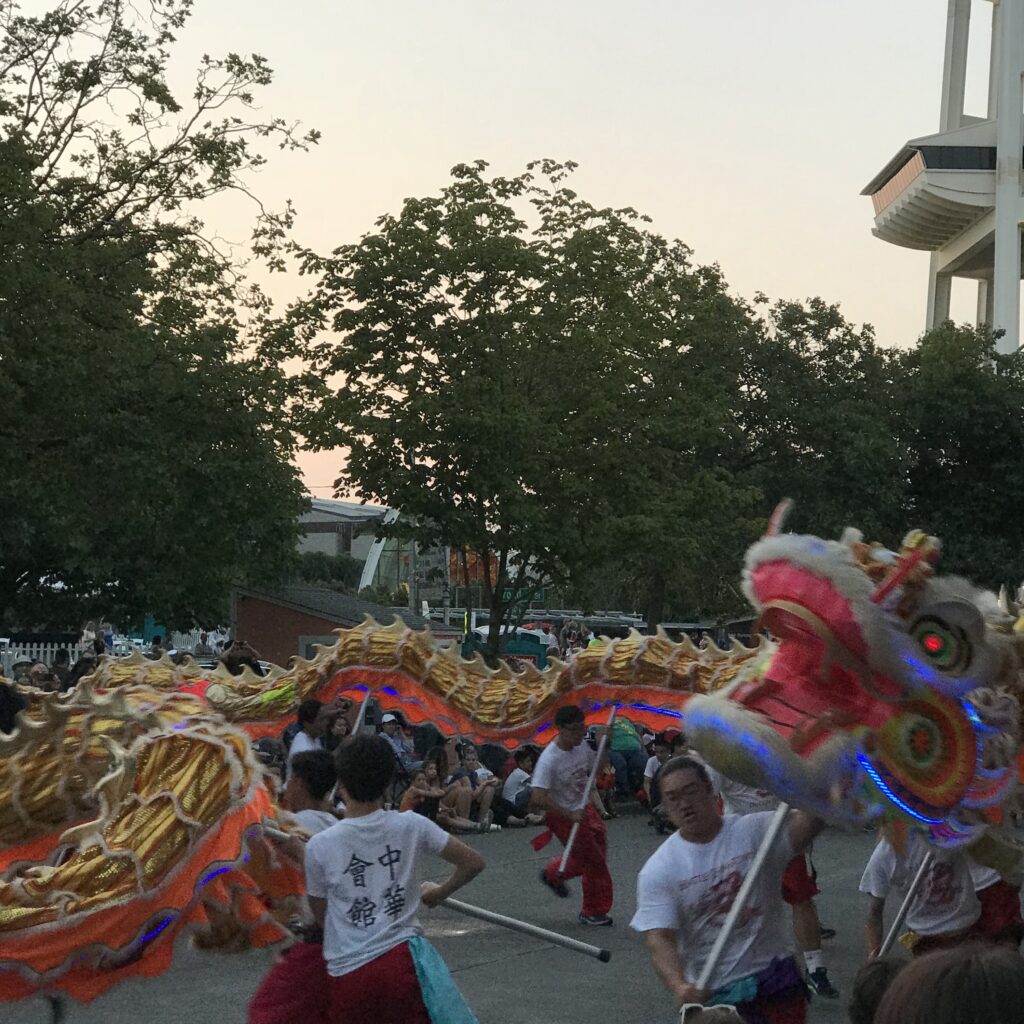
The development of the Salish Sea was influenced by Chinese labor, particularly during the Exclusion Era from 1882 to 1943. Chinese laborers, including those brought by Chinese labor bosses, played a significant role in the development of the region, particularly in industries such as fishing and canneries1.
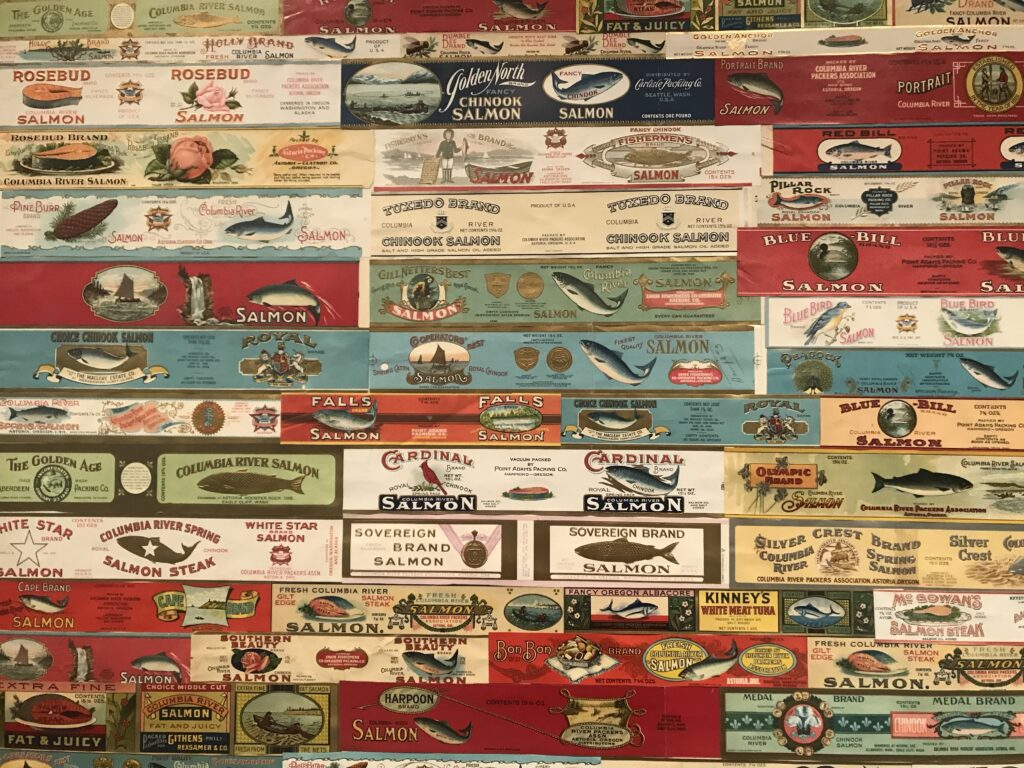
In the canneries, gangs of butchers beheaded, cleaned, and cut the fish into pieces. On the Columbia River after 1872, this work was done exclusively by Chinese men, who were supplied by Chinese labor contractors based in San Francisco. The expert cutters could clean 1,700 fish a day. The Chinese Exclusion Act of 1882 prohibited new Chinese laborers from entering the United States, and by the 1890s the canneries felt the shortage of skilled laborers. They recruited Japanese, Filipino, and Mexican laborers to fill the gap, but many cannery owners insisted the Chinese butchers were the best in the business.
Chinese settlers arrived in the 1850s and were among the original settlers in the unceded territories of the Coast Salish peoples, indicating their early presence in the area3. Vancouver Island played a historic role as a transpacific portal for key stages of Chinese migration to North America and beyond from 1788 to 1918, further highlighting the influence of Chinese immigration in the region5. The contributions of Chinese immigrants to the development of the Salish Sea region, particularly in the context of labor and economic activities, have left a lasting impact on the area’s history and cultural heritage.
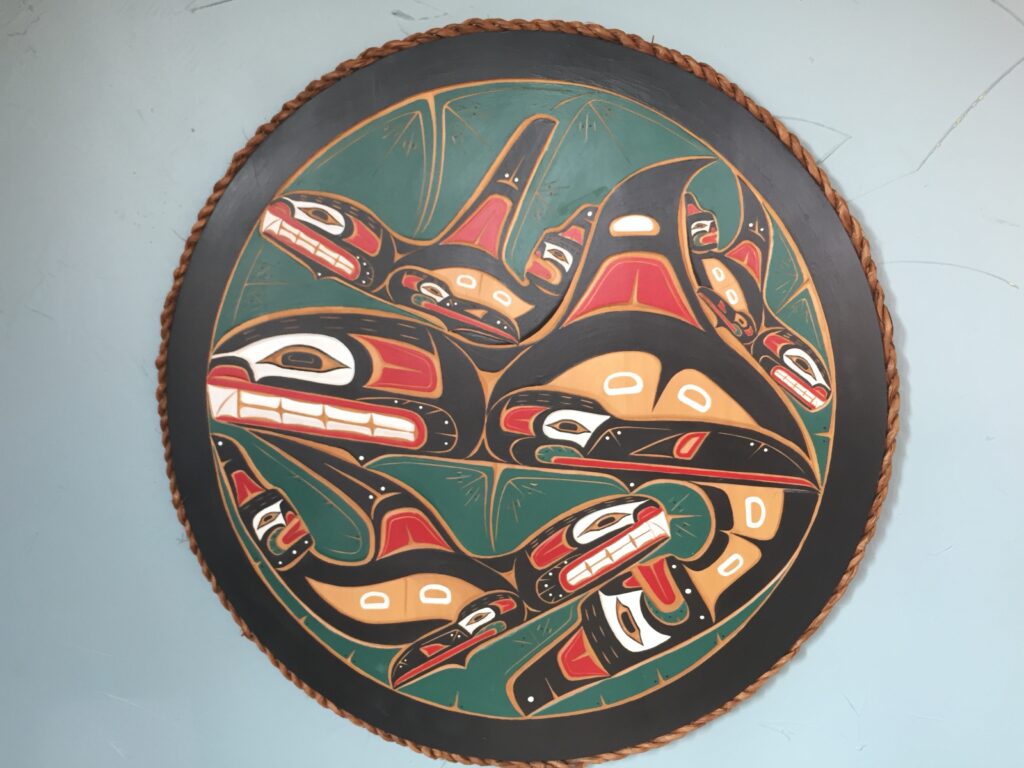
The Asian continent is incredibly diverse, with different customs, lifestyles, religions, philosophies, politics, art, architecture, music, and literature. Some of the countries in Asia including China, Japan, Indonesia, the Philippines, Vietnam, Thailand, Myanmar, South Korea, and The Lunar New Year is celebrated across Asia, especially in China, Korea, Vietnam, and Malaysia.
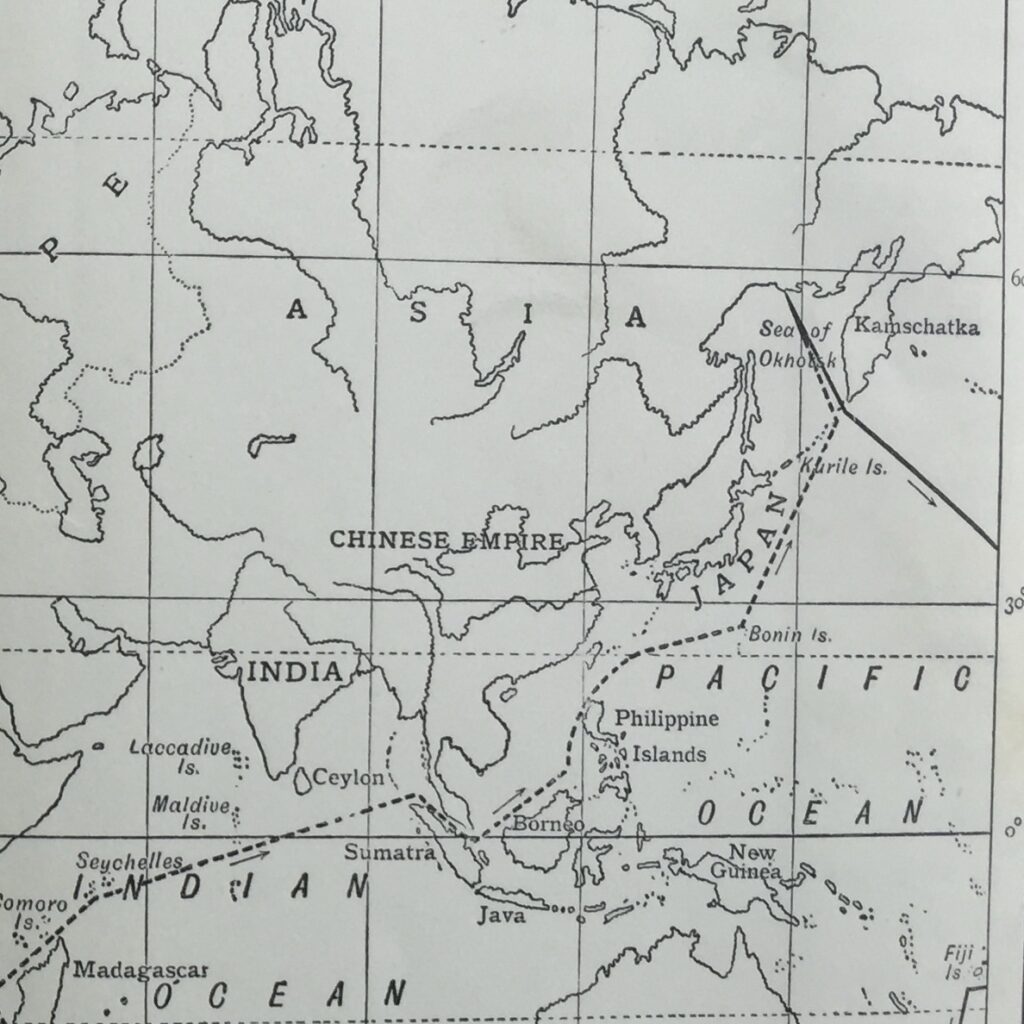
The holiday is observed as a way to welcome the beginning of spring and mark the start of a new annual cycle based on the lunisolar calendar. It is a public holiday that is observed across multiple days in China, North and South Korea, Malaysia, the Philippines, Indonesia, Singapore, Brunei, and Vietnam. While Japan as a society broadly doesn’t celebrate the Lunar New Year, the country’s major Chinatowns, like in Yokohama, Nagasaki, and Kobe, host Lunar New Year events. The Lunar New Year is also celebrated in South Korea, Vietnam, Taiwan, and Hong Kong, among other countries.
The Salish Sea area, encompassing regions such as Vancouver, Seattle and the surrounding areas, continues to attract Asian migration due to various opportunities and factors. The strong economy, driven by industries such as technology, research, and academia, has been a significant draw.
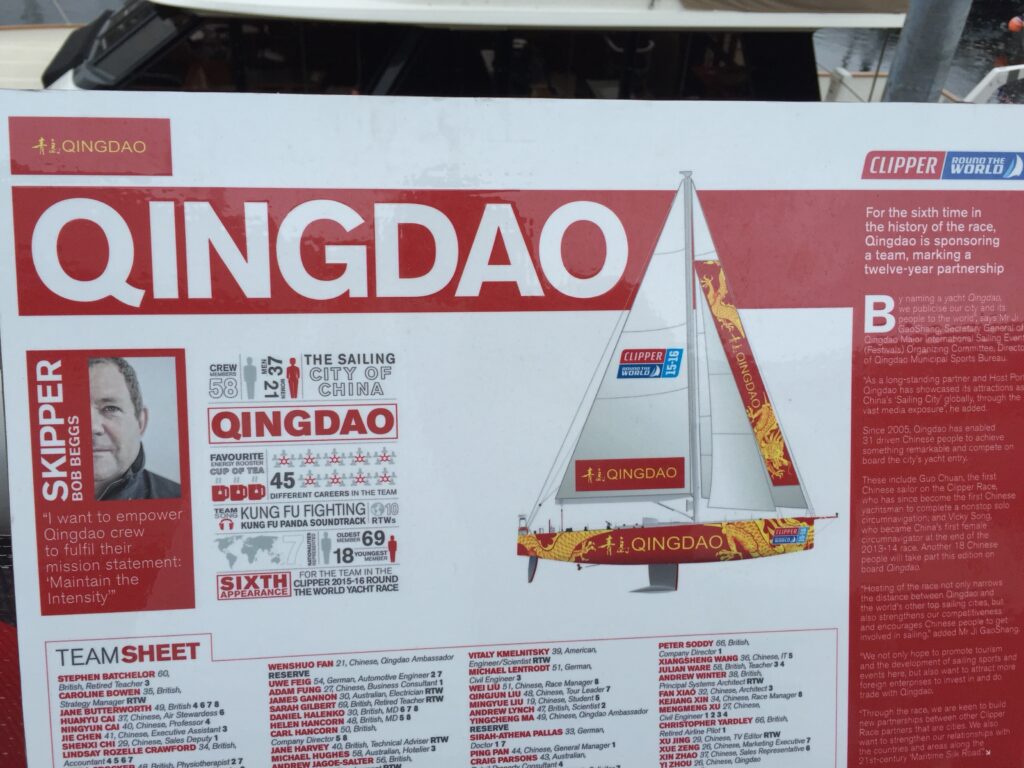
For instance, the presence of major companies like Microsoft in both Seattle and Vancouver has created employment opportunities that appeal to individuals and families from Asian countries. Additionally, the region’s focus on research and innovation, as evidenced by the establishment of the Salish Sea Modeling Center and the call for proposals for projects in the area, presents attractive prospects for individuals in scientific and academic fields. Furthermore, the region’s emphasis on environmental initiatives, such as mariculture and seaweed farming in the Salish Sea, may also be of interest to migrants with expertise or interest in these areas. The diverse cultural and social landscape, as highlighted by events and symposiums focusing on Indigenous/Asian relations, contributes to the region’s appeal as a welcoming and inclusive community. These factors collectively contribute to the ongoing encouragement of Asian migration to the Salish Sea area and to Lunar new year celebrations.
Mahjong and the four winds
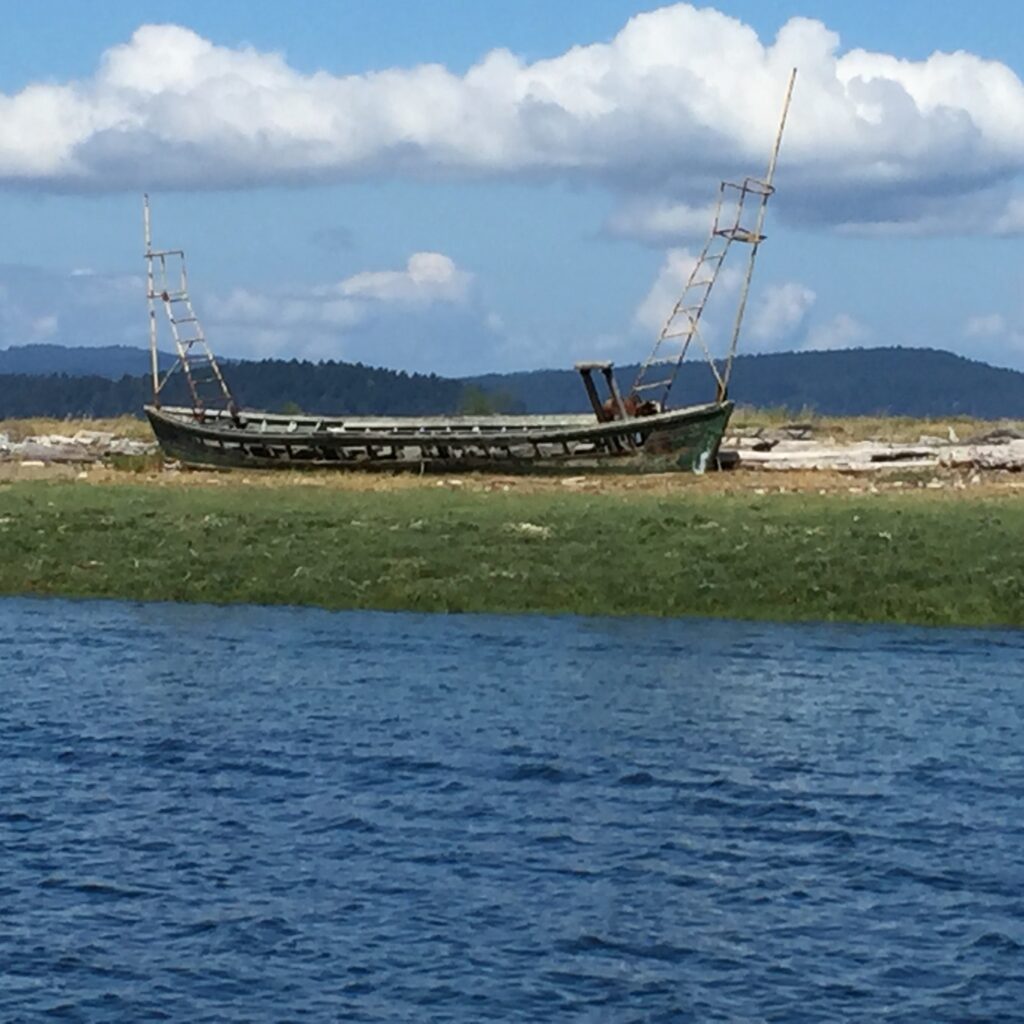
Mahjong, also known as mah-jongg, is a tile-based game that originated in China in the 19th century and has since spread throughout the world. It is commonly played by four players, although three-player variations are found in some regions. The game is a blend of skill, strategy, and chance, similar to Western card games like poker or gin rummy. The Chinese version of Mahjong was initially a male-dominated gambling game, but it has evolved and gained popularity globally, becoming a mainstay at immigrant family gatherings and a source of community building.
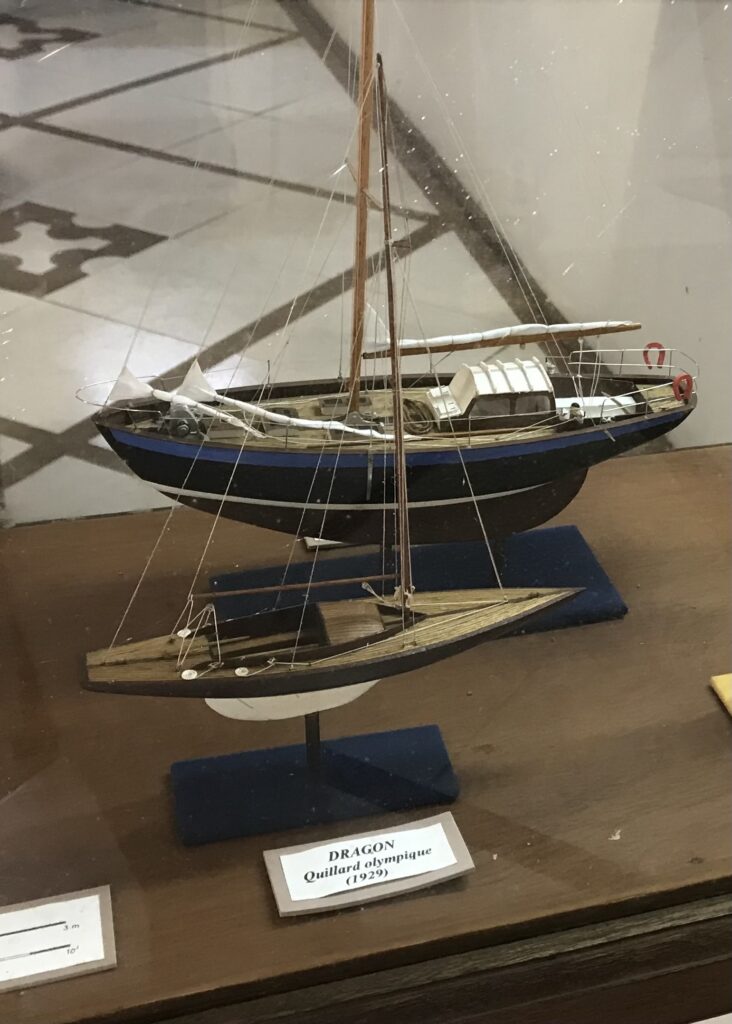
The popularity of Mahjong in the United States is not strictly divided by the East and West coasts, as implied in the series High Castle. The game has historically been associated with the East Coast, due to its introduction in the mid-1920s by Joseph P. Babcock, a Standard Oil employee.
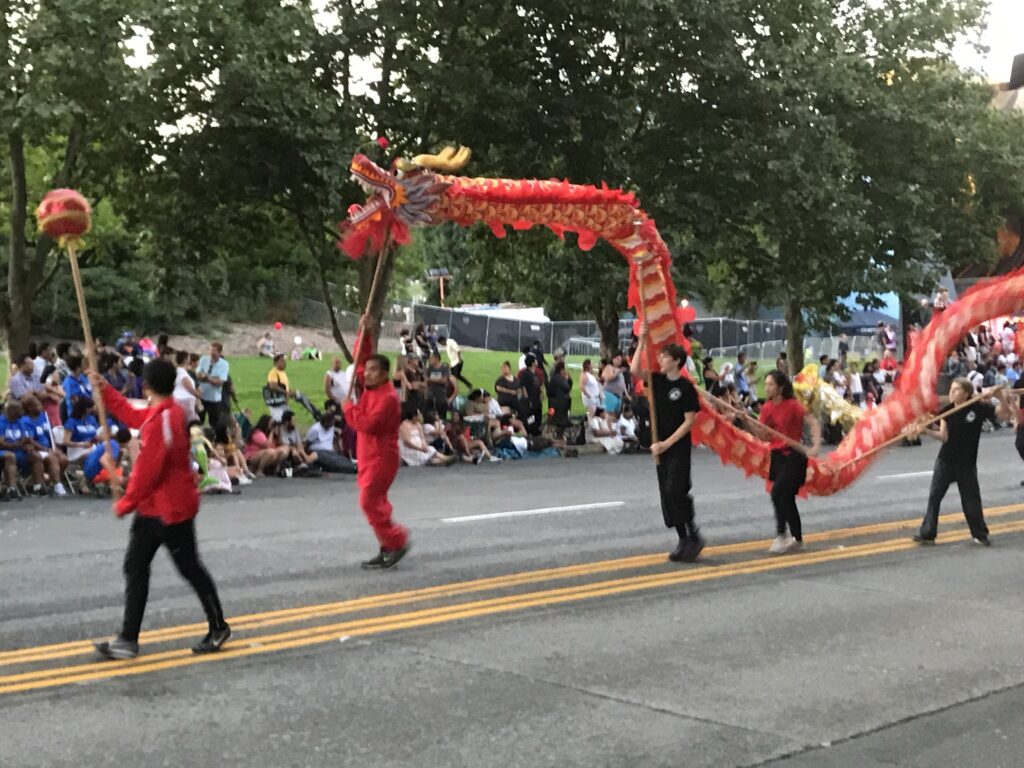
The game has served as a crucial community-building exercise for many marginalized groups, including suburban Jewish women, who formed the National Mah Jongg League in 1937, and incarcerated Japanese Americans. In High Castel, WW2 is won by the Axis and the West Coast is taken over by Mahjong playing Japanese where the East coast is taken over by bridge playing Germans.

Mahjong has gained a loyal following in the USA. The USA National Mah Jongg League, has a membership of roughly 350,000, and the game is estimated to have 300 million followers worldwide. Therefore, while the game may have had its American introduction on the East Coast, its popularity is not limited to a specific region within the United States. In the last decade it has been popular at Salish Sea Yacht Clubs including Olympia Yacht Club, where I learned prior to the pandemic, and at the Seattle Yacht Club where classes on how to play started in January of 2024, in prep for Lunar New Year.

The basic rules of Mahjong involve four players, 144 tiles, and two dice. The game is played with the goal of making matching sets and pairs, similar to poker. A set consists of three or four identical tiles or three consecutive tiles, known as “melds.” The dealer begins the game by discarding their 14th tile into the center of the table, and the other players take turns picking up tiles from the wall or claiming the last tile discarded. The game continues until a player matches a hand of 14 tiles and calls “Mahjong,” ending the game. The tiles are then scored, and a winner is determined. The American version utilizes racks, jokers, and special scoring cards, and has distinct gameplay mechanics.
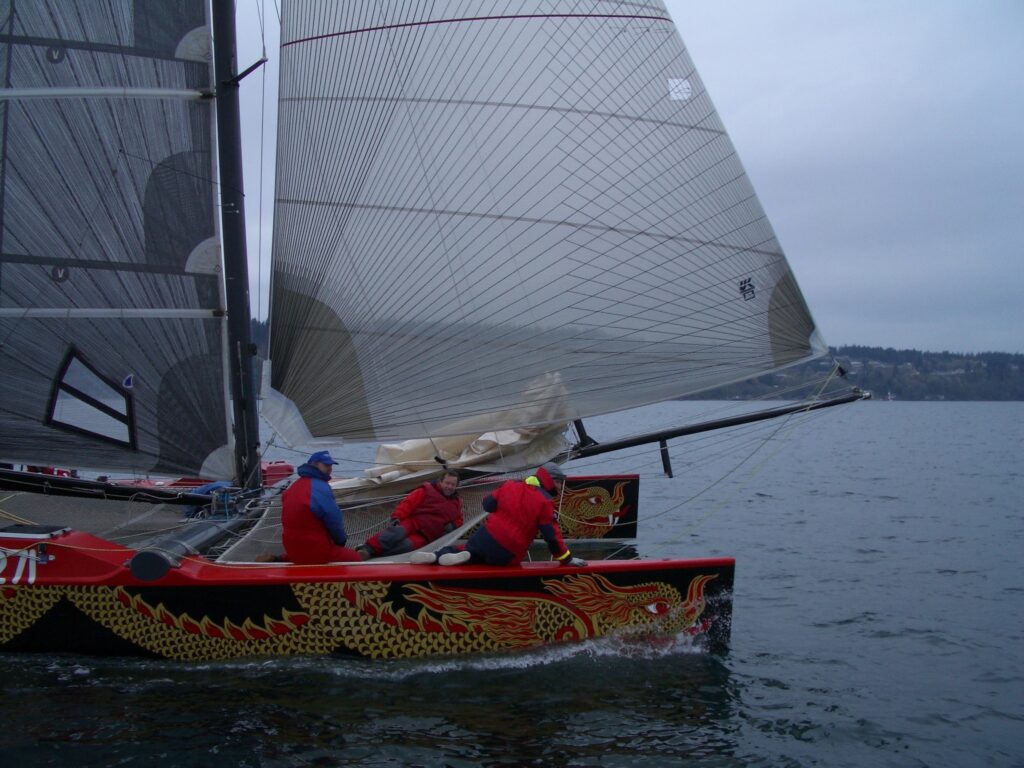
The tiles used in Mahjong are divided into several categories, including suits, honors, and flowers. The suits consist of Bamboo (Sticks), Dots (Wheels), and Cracks (Numbers), each with four sets of tiles numbered 1 through 9. The honors category includes four sets of tiles representing the four winds (East, West, South, North) and three sets of tiles known as “dragons” (Red, Green, White). Additionally, there are four tiles for each wind and three tiles for each dragon in the game. The flowers category includes four flower tiles, each associated with a specific wind (Plum – East, Orchid – South, Chrysanthemum – West, Bamboo – North), and four season tiles, each associated with a specific wind (Spring – East, Summer – South, Autumn – West, Winter – North). These tiles are used to play the game and form various combinations to achieve victory. The references to the four winds partially explains Mahjong’s yacht club synergy. At a boat christening, offerings are made to each wind god as well as to Neptune, god of the sea.

Japan and Lunar New Year

The history of Lunar New Year in Japan is rooted in the adoption of the Chinese lunisolar calendar, which was introduced to Japan in the sixth century CE and was the principal method of timekeeping in Japan until 1873. Prior to that, Japan shared its New Year’s Day with China, Korea, and Vietnam, celebrating on the second new moon following the winter solstice. However, in 1873, as part of the Meiji Restoration, Japan adopted the Gregorian calendar to bring the country in line with the West.
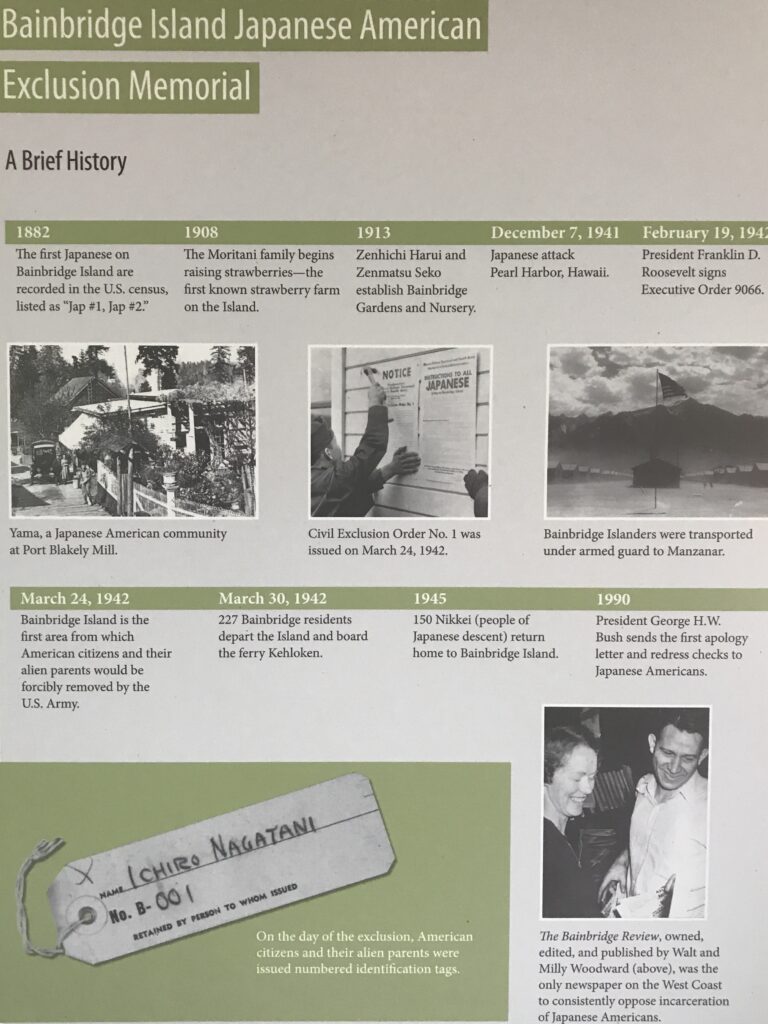
This transition led to the fading of the lunisolar calendar from daily life in Japan, and the Lunar New Year customs mainly died out with most people. Despite this, remnants of Japan’s older lunar history remain, and Lunar New Year festivities are still celebrated in Japan, particularly in areas with large Chinese populations, such as Yokohama’s Chinatown. While it is not an official public holiday, the festival is observed with traditional performances, acrobatics, parades, and a variety of cultural activities. Therefore, the history of Lunar New Year in Japan reflects the country’s historical ties to the Chinese lunisolar calendar and the continued celebration of the festival in areas with a strong Chinese cultural presence. In the Salish Sea area, Japanese Oysters are served during Lunar New Year.
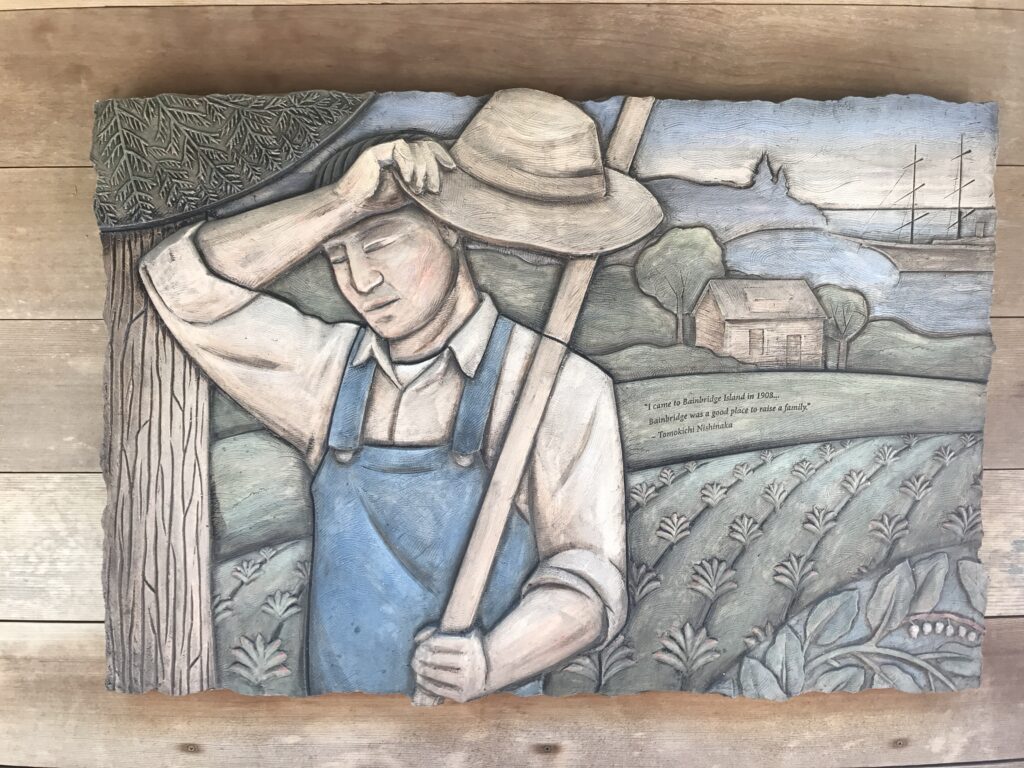
Bainbridge was a good place to raise a family.”
– Tomokichi Nishinaka
The Japanese oyster is a non-indigenous species that was first brought into the Salish Sea in 1912 or 19134. It can live up to 30 years and is fully mature and able to reproduce after about two years5. The Japanese oyster is a popular seafood and Salish Sea aquaculture species, and it has become an important part of the aquaculture industry in the region24. Therefore, the Japanese oyster has a significant presence in the Salish Sea and other coastal areas, where it is valued for its ecological and economic contributions. During WW2 the Japanese oyster was marketed as the Pacific Oyster.
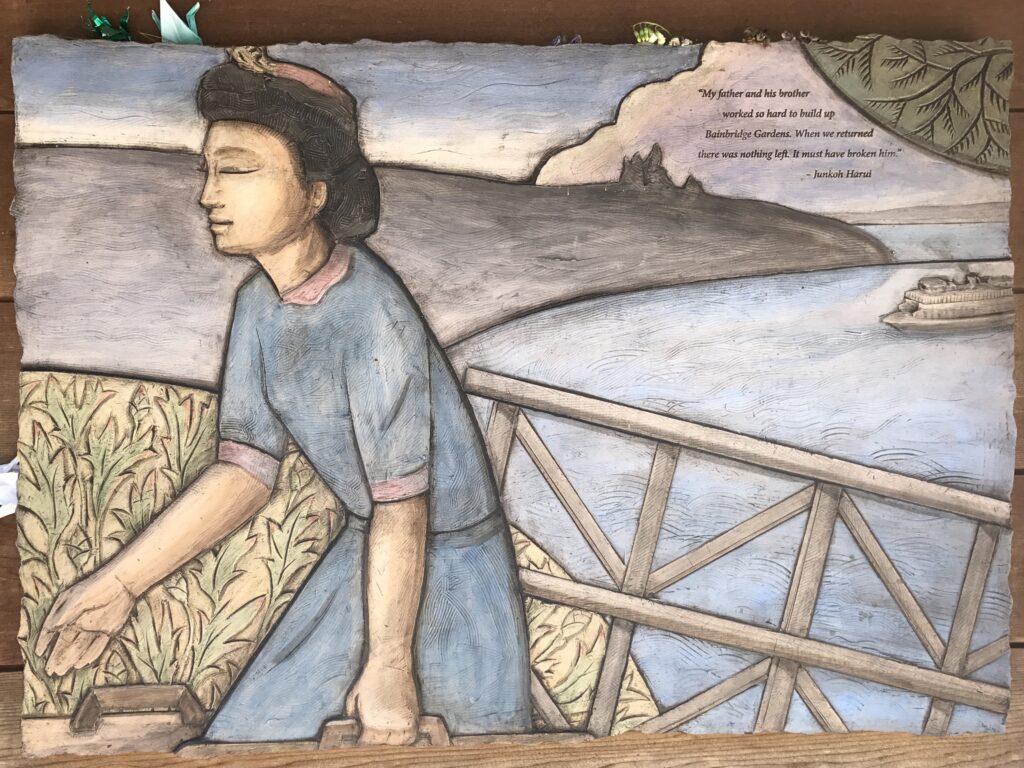
– Junkoh Harui
The cultivation of oysters by Japanese Americans in the region has been an important part of the area’s history and economy. The oyster industry in the Salish Sea has been shaped by the contributions of Japanese American oyster farmers, who have played a significant role in the development of oyster cultivation in the region.
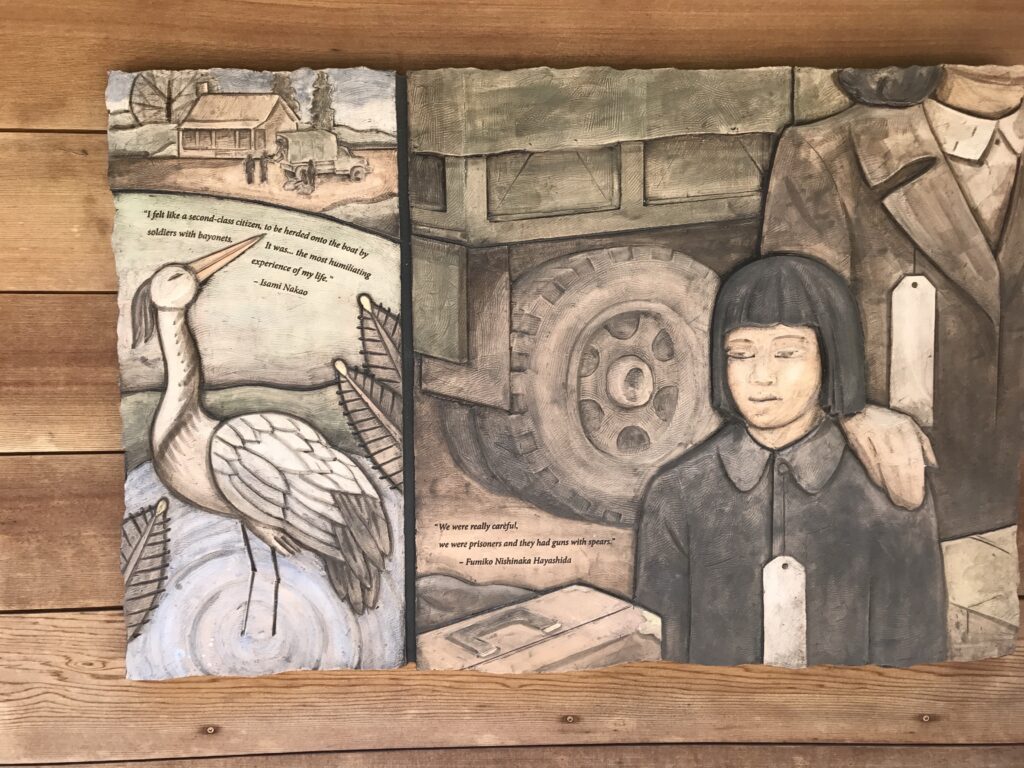
“I felt like a second-class clizen, to be herded onto the boat by soldiers with bayonets, It was… the most humiliating experience of my life.”
– Isami Nakao”
We were really carèful, we were prisoners and they had guns with spears.”
– Fumiko Nishinaka Hayashida
Prior to internment, the Japanese community in the Salish Sea area, particularly in the San Juan Islands, was involved in various activities such as seasonal labor in salmon canneries, logging, and woodworking. The Roche Harbor Lime Company and the McMillin family, among others, employed numerous Japanese workers. By 1940, only one Japanese American family, the Saokas, remained in the San Juan Islands, where Jack Saoka had worked in a cannery and later established a florist and nursery business. The Japanese population in the Salish Sea area prior to internment constituted a significant part of the community, particularly in industries such as fishing, logging, and agriculture.
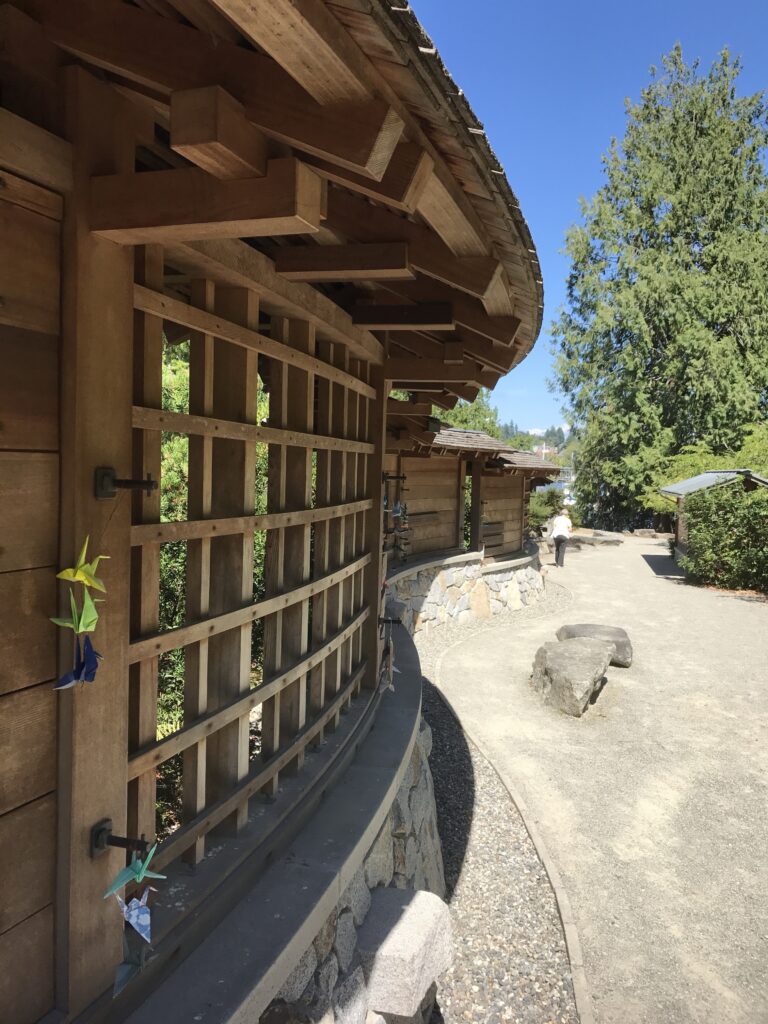
During World War II, the Japanese population in the Salish Sea area was interned in various camps, including the Minidoka War Relocation Center in Idaho. The internment of Japanese Americans was a result of Executive Order 9066, which authorized the relocation and internment of individuals of Japanese ancestry living on the West Coast of the United States. This led to the forced relocation and incarceration of over 120,000 Japanese Americans, many of whom were residents of the Salish Sea area.
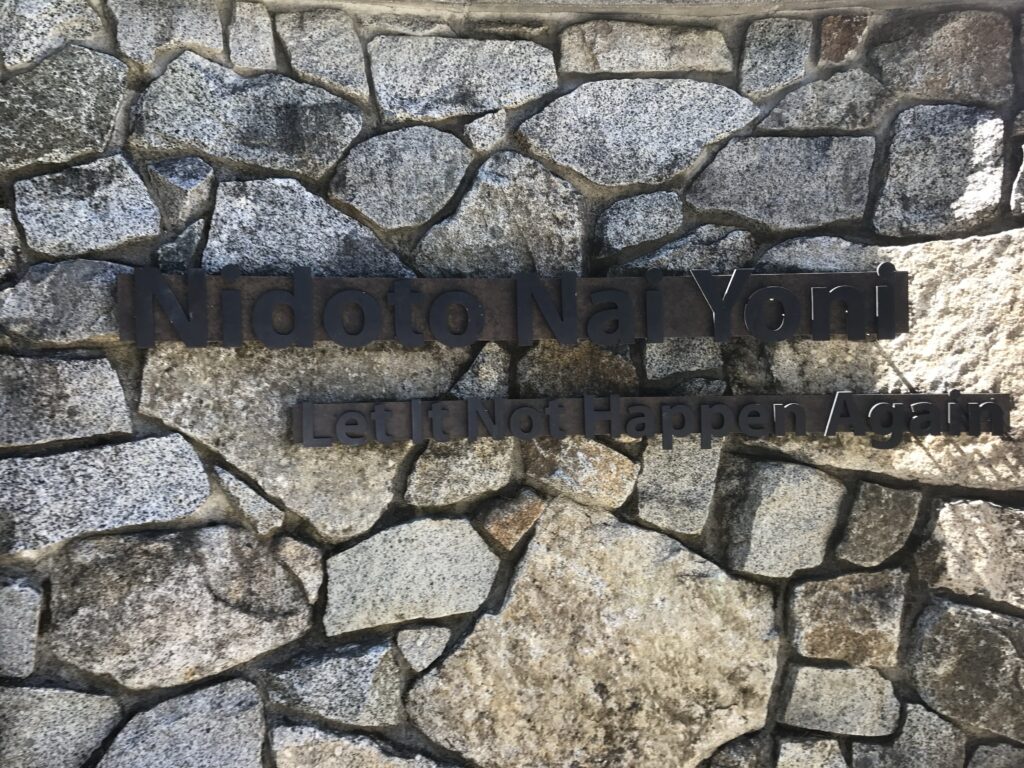
Let it not happen Again
Populations

In Vancouver British Columbia Canada, the city of Vancouver itself is roughly 50% Asian, including Chinese, Filipino, Vietnamese, and South Asian residents. The suburb of Richmond is more than 60% ethnic Asian, mostly Chinese.

THE ROOSTER IS REGAL RESOLUTE AND RESPLENDENT. IT EXTRUDES SUPRENE CONFIDENCE AND ARROGANCE. NOT ACCUSTOMED TO TACT AND Deplomacy, ROOSTER PEOPLE ARE VERY OUTSPOKEN AND DIRECT AND CERTANLY WOULD NOT BE CONSIDERED TO BE SHY. WITH A KEEN EYE FOR DETAILS. THE ROOSTER IS A SUPERB ORGANZER. WITH A NOSE FOR making MONEY, ROOSTERS WOULD BE QUITE HAPPY IN PUBLIC RELATIONS AND ARE MOST COMPATIBLE WITH THE BULL AND SNAKE,
The holiday, which lasts for 15 days, can lead to a complete shutdown, impacting global supply chains and trade. Businesses are advised to plan ahead, place orders early, and manage their inventory to minimize the impact on their operations. Additionally, the Lunar New Year presents a lucrative opportunity for eCommerce businesses to boost earnings if they can prepare in time for the celebrations.

RAM PEOPLE ARE SENSITIVE REFINED AND EXTREMELY PESSIMSTIC WITH A TENDENCY TO BE WORRIERS. PASSIVE IN NATURE RAMS DISLIKE DISCIPLINE AND HARSH CRITICISM, BASICALLY, THEY ARE A FOLLOWER AND SURVIVOR NEVER Comfortable to take COMMAND OR BE CONFRONTATIONAL IT’S GOOD NATURE CALM DEMEANOR AND KIND HEARTEDNESS WILL WIN FRENDS AND LONG LASTING COMPANONSHIP, THESE TRAITS SUGGEST SUCCESS AS AN ENTERTANER OR WRITER, Rams ARE MOST HAPPY WITH THE RABBIT OR PIG
In terms of hiring, the Lunar New Year can lead to workforce shortages, as many employees take an extended holiday during this period. This can exacerbate existing labor shortages and impact businesses for weeks or even months. Employers are encouraged to plan for potential workforce shortages and consider alternatives to reduce the impact on their operations. The Asian population in Vancouver is more than double that of Seattle2.
The racial demographics of Seattle, Washington, have evolved over the years, with the city becoming more racially diverse. According to the U.S. Census Bureau, the racial composition of Seattle is as follows:
- White alone: 63.6%
- Asian alone: 16.8%
- Black or African American alone: 6.7%
- American Indian and Alaska Native alone: 0.6%
- Native Hawaiian and Other Pacific Islander alone: 0.2%
- Two or More Races: 9.4%
- Hispanic or Latino: 7.5%
- White alone, not Hispanic or Latino: 61.2%
As of 2022, the Asian population in Seattle is estimated to be 16.8% of the total population, making it the second-largest racial group in the city.

THE PIG PROJECTS A SYMBOL OF RAW POWER, STAMINA AND VITALITY.
PIGS ARE SINCERE, TOLERANT, HONEST, LOYAL, FUN LOVING AND CAN BE THE MOST ACCOMMODATING FRIEND IMAGINABLE. OFTEN LACKING SELF CONTROL, THEY CAN SUCCUMB EASILY TO OVERINDULGENCE AND CORRUPTION AND THEREFORE, CANNOT BE TRUSTED WITH MANAGING MONEY. PIGS POSSES CONSIDERABLE TALENT IN THE ARTS AND WOULD DO WELL AS AN ACTOR OR ENTERTANER, PIGS GET ALONG WELL WITH ALL EXCEPT THE SNAKE AND MONKEY.
The city’s Chinatown-International District hosts popular Lunar New Year celebrations, including fireworks, dancing, and traditional red letter “lucky money” that take over the streets during the festival. The Chinese New Year parade in Seattle holds significant cultural and community importance. It is a vibrant and festive celebration that showcases the richness of the Asian communities in Seattle, particularly in the Chinatown-International District. The parade typically features a Chinese Lion and Dragon Parade performed by a team of dancers, as well as a variety of cultural performances, including music, dance, and martial arts.

HORSES ARE BLESSED WITH CHEERFUL DISPOSTIONS AND ARE WELL KHOWN FOR THER LOVE OF FANFARE AND ATTENTION. THEY POSSESS A CAPACTY FOR HARD WORK AND ARE EXTREMELY intelligent , SOCIABLE AND talkative THEY TEND TO BE SELFISH AND EGOTISTICAL HOWEVER AND ARE SHORT ON PATIENCE. THE HORSE makes A GREAT ADVENTURER BUT IS A POOR TEAM member, THESE TRAITS SUGGEST A CAREER AS A SCIENTIST. A HORSE PREFERS A TIGER OR DOG.
Bruce Lee was a renowned martial artist, actor, and filmmaker. He was born on November 27, 1940, (a dragon) in San Francisco, California, and passed away on July 20, 1973, in Kowloon, Hong Kong at the age of 32. Bruce Lee’s grave is located at Lake View Cemetery in Seattle, Washington. He is buried next to his son, Brandon Lee, who was also an actor and martial artist. The cemetery is situated on Capitol Hill, right next to Volunteer Park. The grave is a popular attraction and a site of pilgrimage for fans and admirers of Bruce Lee from around the world. Especially for Lunar New Year. It is customary for visitors to pay their respects by leaving offerings such as figurines, crystals, candles, and flowers at the grave site. The cemetery is open to the public every day from 9 a.m. until dusk.
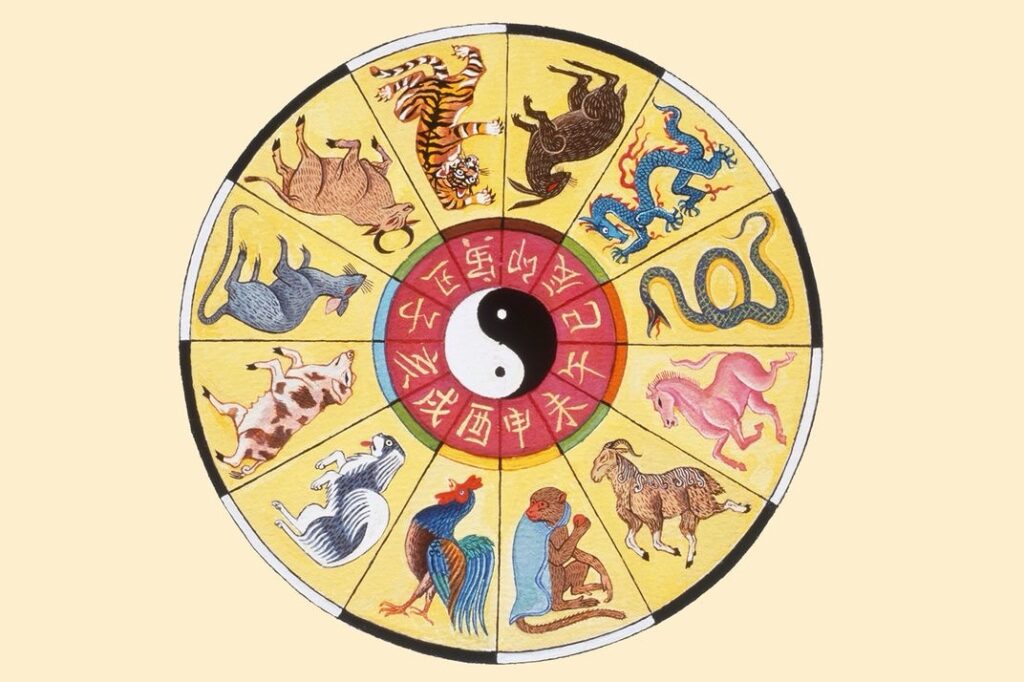
The dragon is the only mythological creature in the Chinese zodiac system.
Public domain via Wikimedia Commons
Arriving fifth in the sequence, the dragon is the most potent—and most desired—zodiac symbol. It “catalyzes all the powers of nine animals and is therefore considered very supreme,” says Richard E. Strassberg, an expert on Chinese culture and the author of A Chinese Bestiary: Strange Creatures From the Guideways Through Mountains and Seas. “There [is] an overwhelming mixture of respect and hope in invoking the dragon’s powers.”
When the Year of the Dragon arrives, birth rates in China tend to boom. Many parents believe that a child born during this year, a lucky dragon baby, will be destined for success…
a deity often identified as the Jade Emperor calls upon all animals to participate in a race. The first 12 animals to complete the course will be included in the zodiac calendar, with their position in the cycle determined by the order in which they arrive at the finish line.
Each zodiac animal’s competition strategy is indicative of that sign’s traits. The rat, for instance, finishes in first place by convincing the ox to carry it across the river; it represents cunning and tenacity. The dragon, expected to easily prevail due to its powers of flight, stops halfway through the race to provide water to a drought-ridden village, immortalizing the animal as a symbol of selfless benevolence.
The zodiac also alternates between the five fundamental elements: wood, fire, earth, metal and water. This year, the dragon inhabits the wood element, which represents development and achievement.
Why Is the Year of the Dragon Considered So Lucky?
The Chinese zodiac sign of the Dragon is associated with five different elements, each influencing the personality traits of individuals born under this sign. The five types of Dragons based on the Chinese zodiac and their associated elements are:
- Wood Dragon: 1964, 2024 Wood Dragons are introverted, less enthusiastic, and may lack good relationships.
- Fire Dragon: 1976 Fire Dragons are smart and easygoing.
- Earth Dragon: 1988 Earth Dragons are lovely, generous, and trustworthy.
- Gold Dragon (Metal Dragon): 1940, 2000 Gold Dragons are determined, brave, and hardworking.
- Water Dragon: 1952, 20125 Water Dragons are witty, positive, and caring.
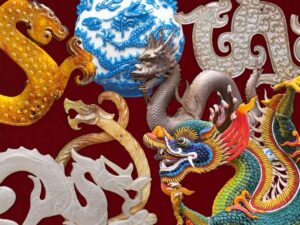
Bruce Lee was born in 1940, which makes him a Gold Dragon according to the Chinese zodiac. Gold Dragons are believed to be determined, brave, perseverant, and hardworking. They are also associated with being intelligent and having a strong sense of responsibility. This aligns with the traits often attributed to Bruce Lee, such as courage, power, and ambition, which are commonly associated with those born under the Dragon sign.
The Seattle Lunar New Year provides an opportunity for the community to come together, celebrate traditional and contemporary Asian culture, and enjoy activities such as arts and crafts, food, and music. The parade also serves as a platform to share and preserve cultural traditions, promote cross-cultural understanding, and foster a sense of unity and pride within the local Asian communities. Additionally, the parade attracts locals and tourists alike, offering everyone a chance to experience the vibrant and diverse cultural heritage of the region.
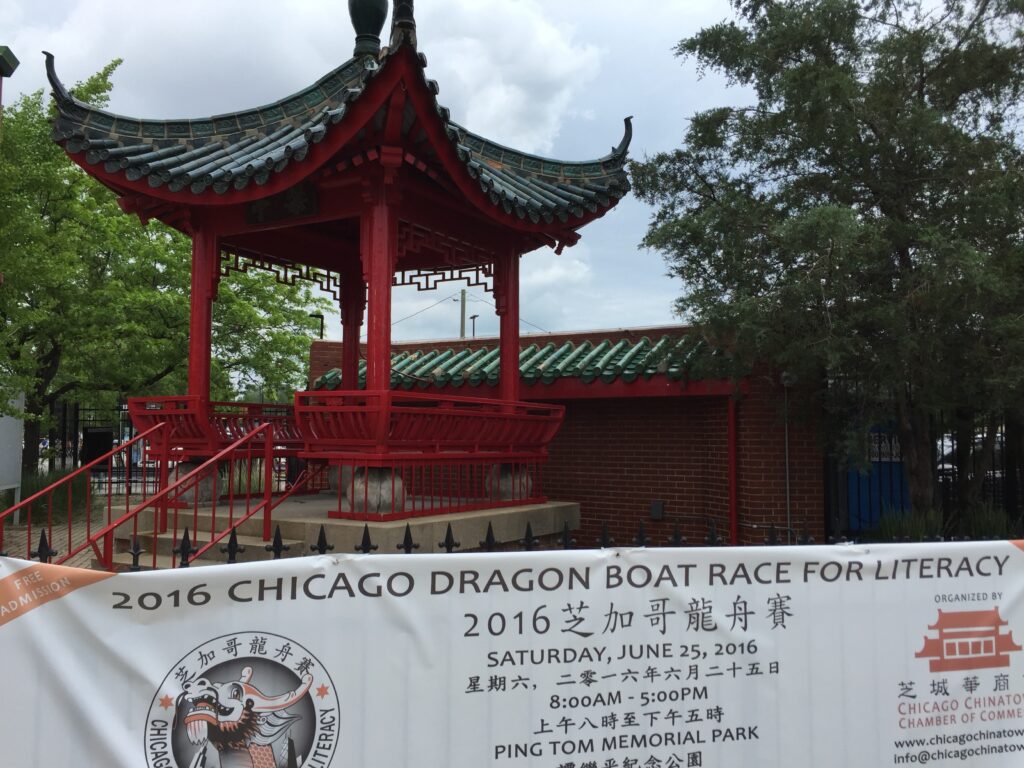
The Asian population in Bellevue, Washington, (a suburb of Seattle) comprises about 38% of the residents. The number of Chinese residents has grown significantly in Bellevue, reaching about 21,000 in 2019. The Asian population in Bellevue has been the fastest-growing non-White population group since 1990, increasing from just under 10% to about 38% in 201914.
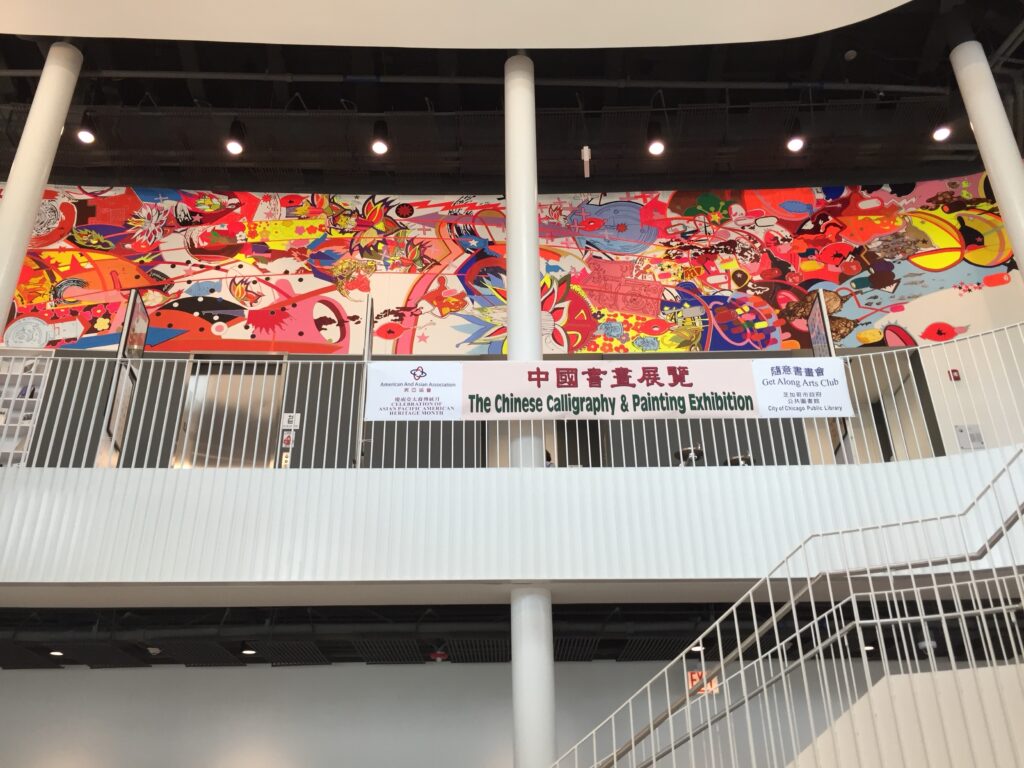
The city of Victoria, which is located on Vancouver Island, has an Asian population of about 15%5.
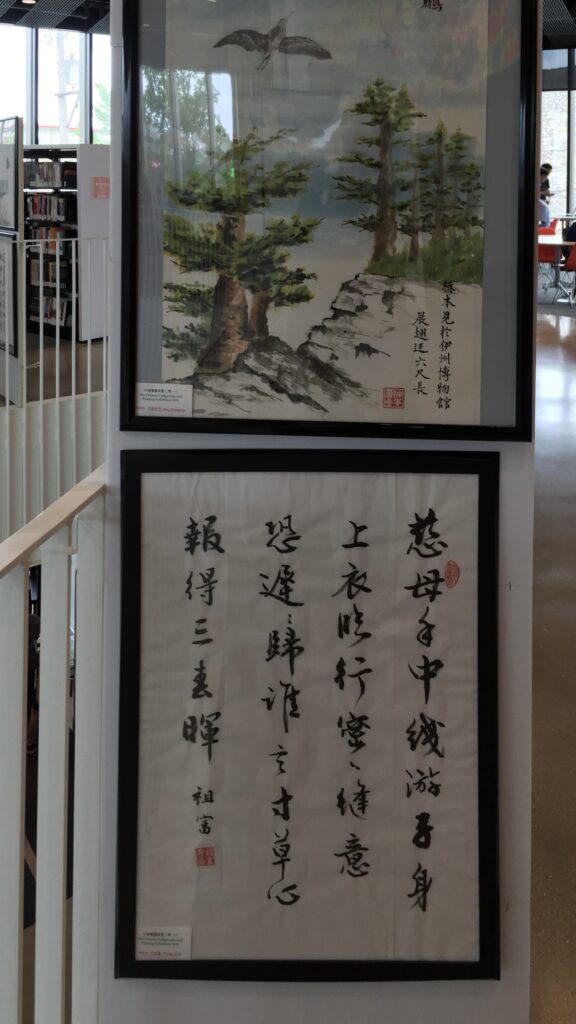
In Olympia, Washington, several Lunar New Year events and celebrations take place, offering a diverse range of activities for the community. Some of these events include:
- Lunar New Year Celebration at Lien Hoa Buddhist Temple: The temple hosts a free, public celebration from 9 p.m. to midnight, featuring traditional festivities to welcome the Lunar New Year3.
- Olympia Area Chinese Association (OACA) Chinese New Year Gala: The OACA organizes an annual Chinese New Year Gala, which is scheduled to take place on February 17, 2024. The event typically includes a variety of cultural performances, traditional food, and other celebratory activities4.
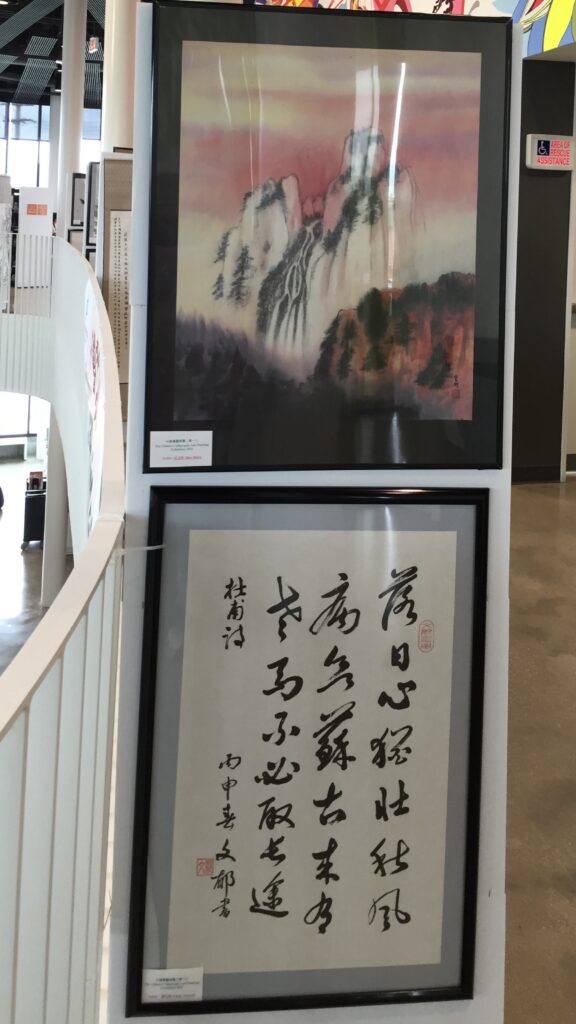
These events provide an opportunity for the community in Olympia to come together and celebrate the Lunar New Year with traditional customs, cultural performances, and festive gatherings.
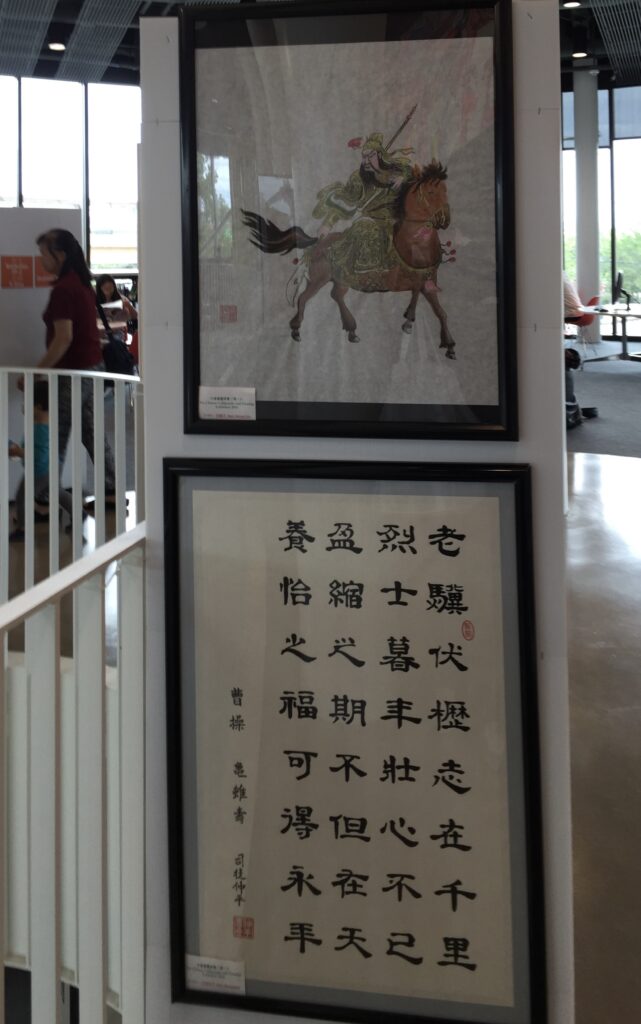
Red Envelope
Red envelopes are an integral part of Lunar New Year celebrations. These envelopes, known as “hongbao” in Mandarin and “laisee” in Cantonese, are traditionally filled with money and given as gifts during Chinese New Year. They are typically presented to children and elderly people as a symbol of good luck and blessings for the upcoming year. The color red, which symbolizes energy, happiness, and good luck in Chinese culture, is used for the envelopes.
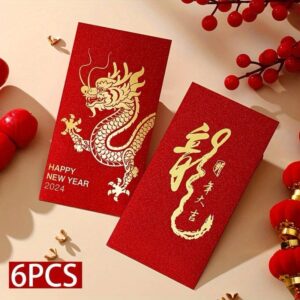
In addition to Chinese New Year, red envelopes are also given on other occasions such as weddings, birthdays, the birth of a baby, and funerals as a way to convey good wishes and share blessings. The tradition of giving red envelopes is deeply rooted in Chinese culture and is a significant part of various celebrations and social gatherings.
Another important tradition is the exchange of Hong Bao, or red envelopes. Older married family members pass on red envelopes filled with cash, while employees often use the festival as an opportunity to give out bonuses. A word to the wise though, don’t give an amount with a 4 in it, as the number’s character 四 has an alarmingly unlucky association with the one for death 死.
Finally, if you want to wish someone a happy new year in Chinese, it’s simple. In Mandarin, you can use the phrase “春节快乐” (Chūn Jié Kuài Lè), which means “Happy Spring Festival”, and in Cantonese, it’s “恭喜发财” (Gong hei fat choi), which means “Congratulations and be prosperous”.
Year of the Dragon: Everything you need to know about Chinese New Year 2024
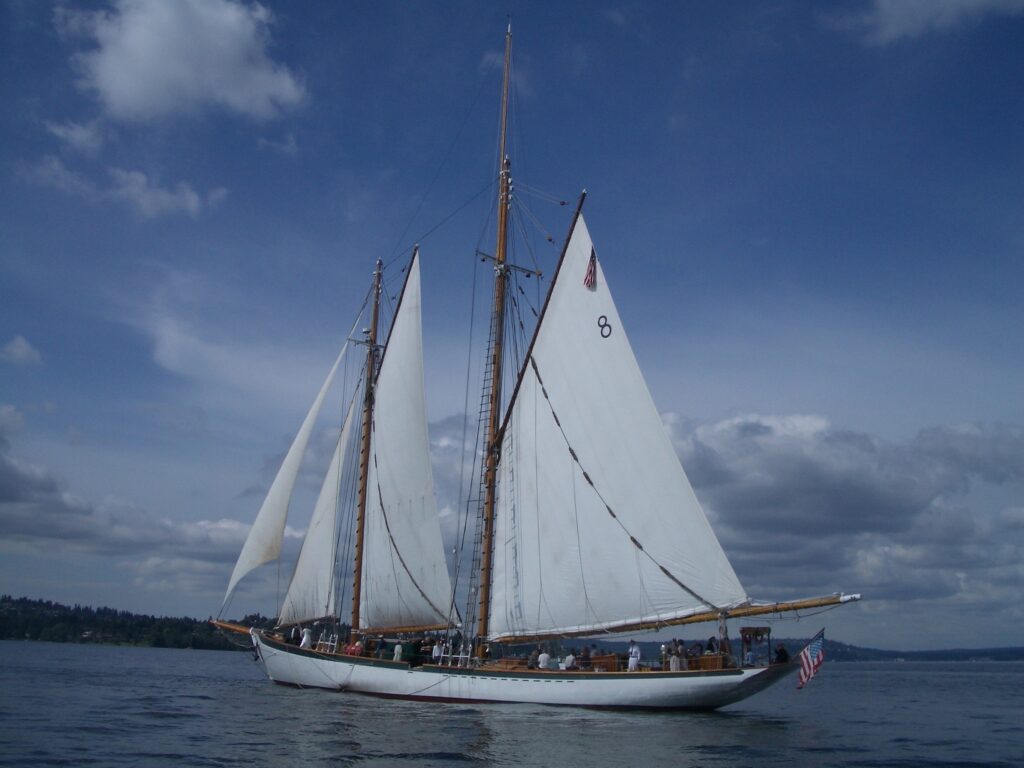
The tradition of giving red envelopes during Chinese New Year has its origins in ancient stories and legends. One of the oldest stories involves a demon named “Sui” who would terrify children while they slept on New Year’s Eve. To protect the children, parents would give them eight coins to play with, as the number eight is considered auspicious. Over time, the practice of giving red envelopes filled with money became a way to keep children safe and bring good luck.
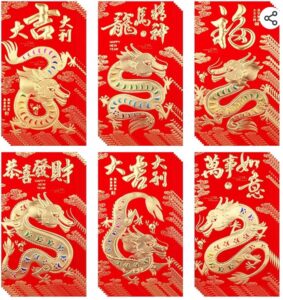
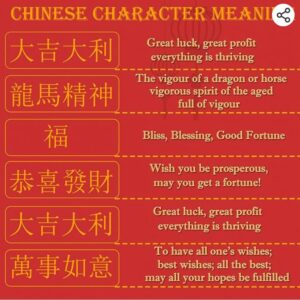
The red color of the envelope symbolizes good luck and prosperity in Chinese culture, and the significance of the red envelope lies not only in the money it contains but also in the blessings and good wishes it conveys for the new year ahead. Red envelopes are also given on other occasions, such as weddings, birthdays, and the birth of a baby, as a traditional way to wish good luck and share blessings. The custom of giving red envelopes has been adopted in various countries with sizable ethnic Chinese populations and is an important part of Lunar New Year celebrations and other special occasions.
In Chinese numerology, the numbers 2, 6, and 8 are considered lucky, while 4 is considered unlucky. Here’s what each of these numbers signifies:
Number 2: Pairs are considered auspicious in Chinese numerology. It is common to see “double happiness” (shuangxi) decorations during the Chinese New Year, symbolizing marital happiness and joy.
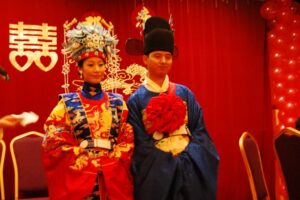
The number 2 is associated with the concept of “double” and is considered lucky, representing balance, harmony, and good relationships.
Number 6: The number 6 is considered lucky as it sounds like the word that means “to flow,” signifying smoothness and success. It is associated with the idea of things progressing smoothly and represents good fortune and prosperity. In choosing the telephone numbers and the vehicle identification numbers, people often prefer a number including 6.

Chinese people take Six (六) as a fortunate number mainly meaning smooth or well-off. In Chinese “六六大顺” means that everything is going smoothly.
Number 8: The number 8 is the luckiest number in Chinese culture, as it is associated with wealth and prosperity. The pronunciation of “8” in Chinese sounds similar to the word for “wealth” or “prosper.” Therefore, it is often regarded as an auspicious number and is especially preferred during the Chinese New Year. It is also commonly used in business and personal matters to symbolize good luck and success.

The popularity of 8 was obvious in relation to the Beijing Olympic Games which commenced at exactly eight o’clock eight minutes on the eighth day of the eighth month in 2008.
During the Chinese New Year, these lucky numbers are often incorporated into various traditions and customs. For example, decorations featuring these numbers, such as “double happiness” symbols and the number 8, are prominently displayed to usher in good fortune and prosperity for the coming year. Additionally, red envelopes containing money gifts often feature these lucky numbers, symbolizing well-wishes for the recipients’ future wealth and happiness.
Relevant Films
There is a film related to the internment topic. “Snow Falling on Cedars” is a 1999 American legal drama film directed by Scott Hicks, based on the 1994 novel of the same name by David Guterson. The film is set on a small island in the Salish Sea and depicts the forced removal and wartime incarceration of Japanese Americans. The story revolves around a murder case in which a Japanese American man is accused of killing a local fisherman in the 1950s, and the film includes flashbacks that explain the interaction of the various characters over the years. The movie addresses themes of love, loss, and racial tension, making it relevant to the topic of Japanese internment in the Salish Sea region.
Some of Bruce Lee’s most famous movies include:
- Enter the Dragon (1973): Directed by Robert Clouse, this film is hailed as one of the best martial arts films ever made and has had a profound cultural impact.
- The Big Boss (1971): Directed by Lo Wei and Wu Chia Hsiang, this Hong Kong martial arts film marked Bruce Lee’s first appearance as a leading man in a major role and became an immediate hit upon its release in Asia.
- Fist of Fury (1972): Also known as “The Chinese Connection,” this film, directed by Lo Wei, showcases Bruce Lee’s exceptional martial arts skills and became a classic in the martial arts genre.
- Way of the Dragon (1972): Also known as “Return of the Dragon,” this film, directed and written by Bruce Lee himself, features an iconic fight scene between Bruce Lee and Chuck Norris in the Colosseum in Rome.
- Game of Death (1978): This film, though incomplete at the time of Bruce Lee’s death, was released posthumously and is known for its iconic fight scenes.
These movies have contributed to Bruce Lee’s enduring legacy as a martial arts icon and a celebrated actor.
Occupying the 5th position in the Chinese Zodiac, the Dragon is the mightiest of the signs. Dragons symbolize such character traits as dominance, ambition, authority, dignity and capacity. Dragons prefer to live by their own rules and if left on their own, are usually successful. They’re driven, unafraid of challenges, and willing to take risks. They’re passionate in all they do and they do things in grand fashion. Unfortunately, this passion and enthusiasm can leave Dragons feeling exhausted and interestingly, unfulfilled.
Zodiac Sign of the Dragon, Fifth of the Chinese Zodiac
Iterary
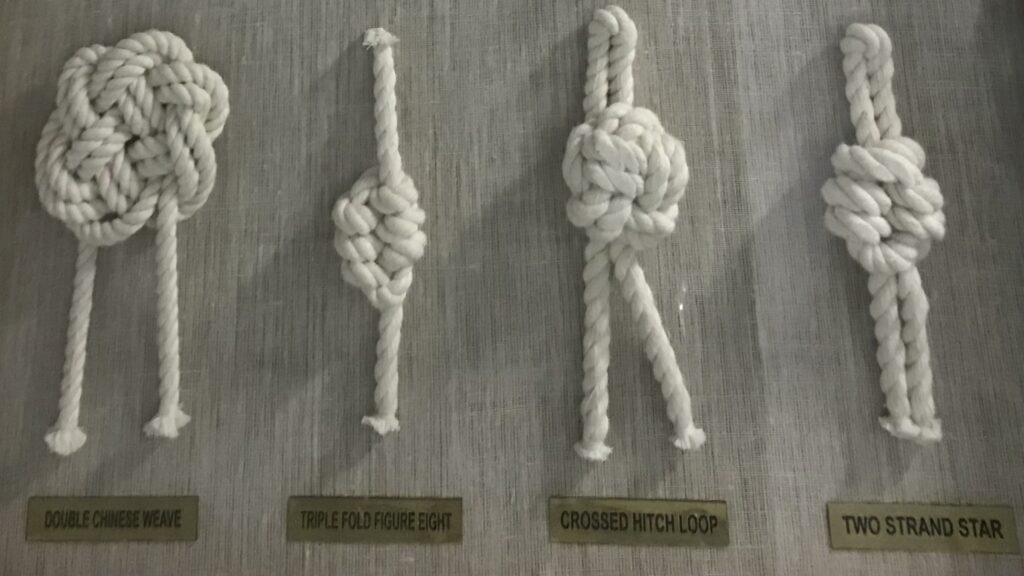
Here’s a multi week itinerary for a Lunar New Year trip to the Salish Sea, incorporating events and places mentioned above as well as others:
Day 1-3: Seattle
- February 1, 2024, Visit the Seattle Asian Art Museum, which offers free admission on the first Thursday of every month2
- Explore other free museums on First Thursday, such as the Museum of History and Industry and the Museum of Flight3.
- Feb 2, get Seattle Boat Show tickets and enjoy wine tasting at show.
- Feb 3, Snoqualme Falls
- Feb 5, Seattle Boat Show Northwest Cruising Seminar, Boys in the Boat
- Feb 7, Lunar New Year Celebration at Seattle Yacht club. Wear red.
- Feb 8, Crab Seminar at Seattle Boat Show @ 1PM
- Feb 9, Date Night. Sales and Ales at Seattle Boat Show.
- Feb 10, Chinese New Year Explore the city’s Lunar New Year events, such as the festivities in the Chinatown-International District, including the Lunar New Year Festival and the International District’s Lunar New Year Celebration1.
- Enjoy the vibrant lantern displays and community spirit at th Salish Sea Lantern Festival4.
Day 4-7: Tacoma and Olympia
- Feb 15 Travel to Tacoma and visit the Washington State History Museum, which offers free admission on the third Thursday of each month3. Canada Flag Day
- Feb 13 SSSS general meeting in Olympia
- Feb 14 SYC Valentine’s Day Dinner
- Explore the city of Olympia and its local Lunar New Year events and celebrations.
- February 18, 2024. The Seattle parade will begin at 1:00 p.m. at the intersection of 24th Street and Wentworth Avenue and travel north on Wentworth towards the viewing stand at Cermak and Wentworth.
Day 8-10: San Juan Islands
- Take a ferry to the San Juan Islands and immerse yourself in the local culture and history, including the Japanese-American heritage in the region.
- Visit local museums and historical sites to learn about the impact of Japanese internment in the Salish Sea area.
Day 11-14: Vancouver
- Travel to Vancouver, BC, and experience the city’s diverse Lunar New Year celebrations, including events in the Chinatown district.
- Explore the city’s cultural institutions, such as the Dr. Sun Yat-Sen Classical Chinese Garden and the Vancouver Art Gallery.
- February 14, Don’t forget Valentine’s Day
This itinerary provides a diverse and immersive experience, allowing you to participate in Lunar New Year events, explore local museums, and learn about the cultural heritage of the Salish Sea region.
Culinary
In Seattle, the Chinese New Year is celebrated with a large event showcasing the diversity, richness, and culture of the Asian community. The celebration includes traditional dragon and lion dances, martial arts, Japanese Taiko Drumming, and other cultural performances. Visitors can participate in the Annual Food Walk and sample items from local businesses. The celebration also includes family-friendly activities and arts and crafts vendors25810.When attending a Chinese New Year dinner, it is customary to wear new clothes, preferably not black as it is associated with death and considered unlucky. Traditional Chinese New Year outfits include a qipao or a cheongsam frock, typically in red, a color associated with passion and luck39.
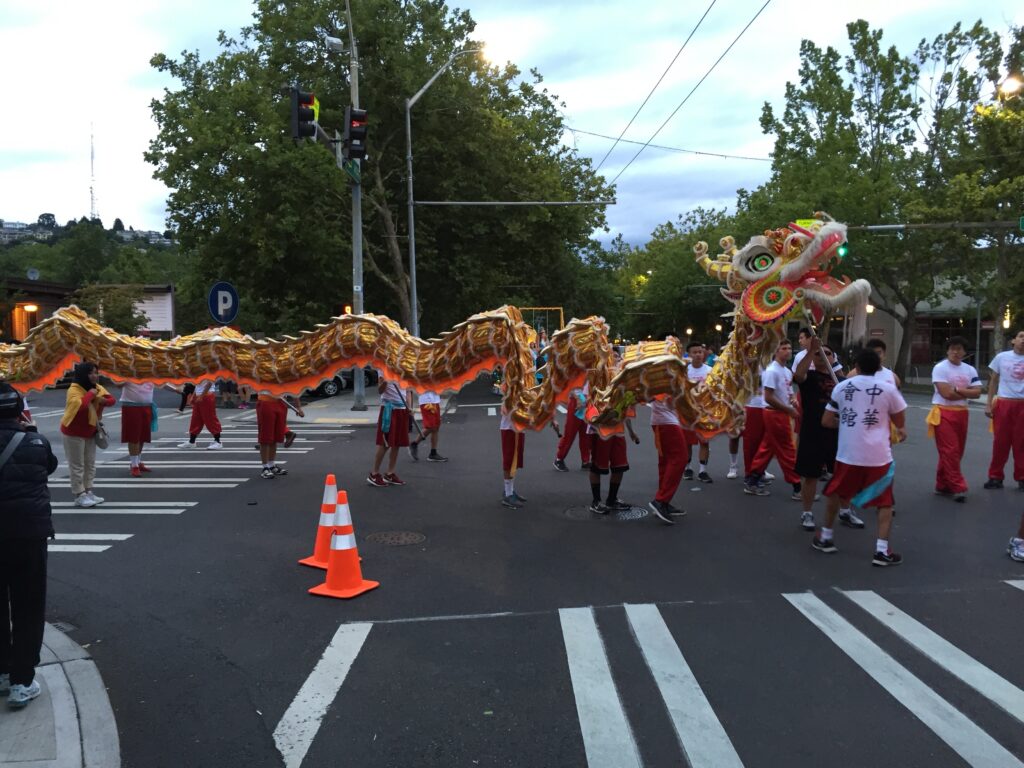
The food served at a home celebration of Chinese New Year is symbolic and meant to bring good fortune for the year ahead. Traditional dishes include Jiaozi (dumplings), Dayu Darou (whole fish or meat), Lawei (cured meats), Chun Juan (spring rolls), Changshou Mian (longevity noodles), and Good Fortune Fruit4.Guests attending a Chinese New Year celebration often bring gifts for the host. While the search results do not specify what these gifts might be, it is common in Chinese culture to bring fruit, sweets, or other food items as a sign of respect and good wishes for the host.
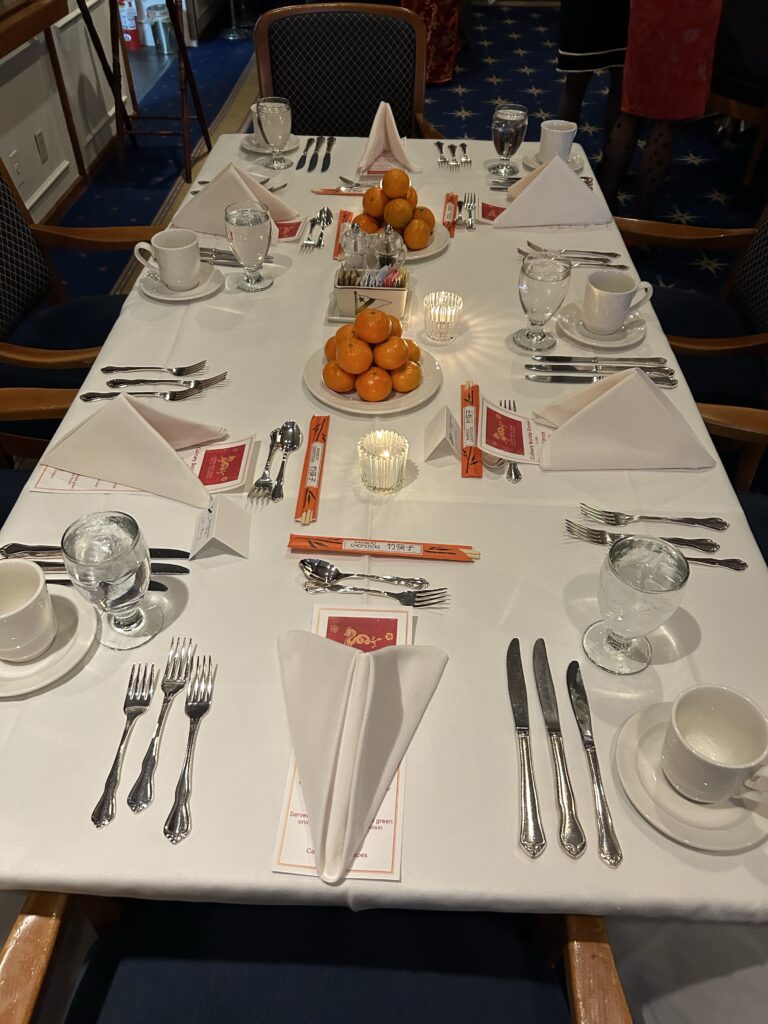
Uwajimaya is a well-known Asian grocery store and gift shop chain in the Pacific Northwest. The Uwajimaya stores are located in the Salish Sea region, with the flagship store situated in Seattle’s Chinatown-International District. The company was founded in 1928 by Fujimatsu Moriguchi, a native of Yawatahama, Japan, and his son, Fujimatsu Moriguchi. The first store was located in Tacoma, Washington, and it was later moved to Seattle’s Chinatown-International District.
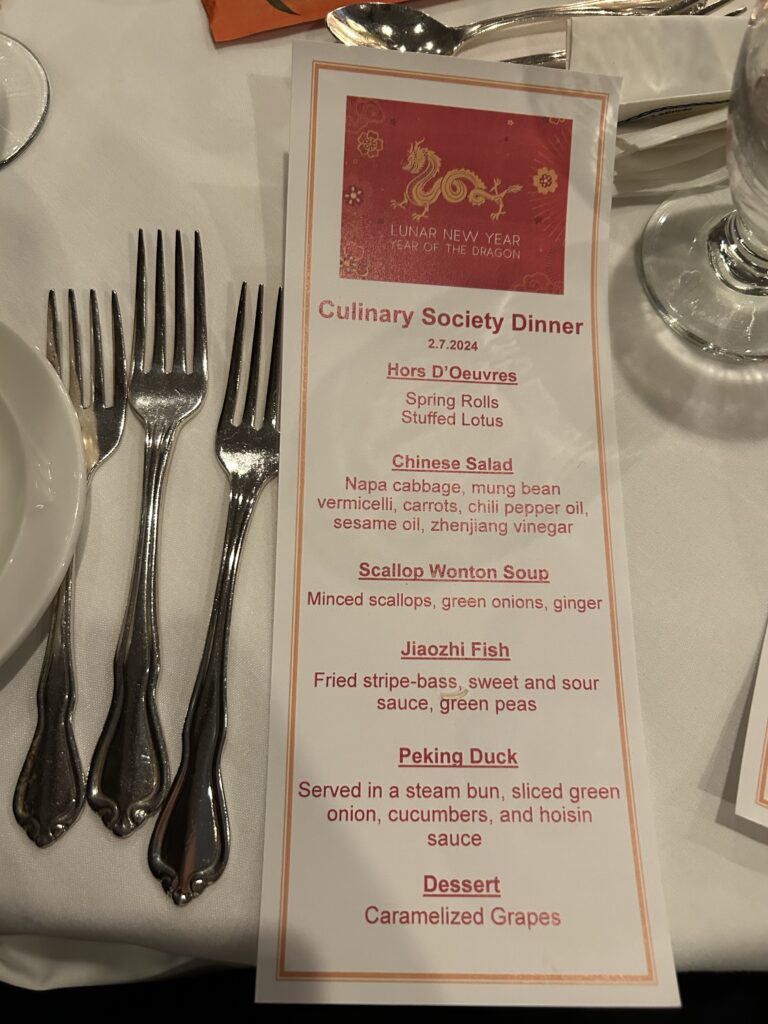
Today, Uwajimaya has multiple locations, including its flagship store in Seattle’s Chinatown-International District, as well as stores in Bellevue, Renton, and one non Salish Sea store in Beaverton, Oregon. The stores offer a wide range of Asian groceries, gifts, and specialty items.
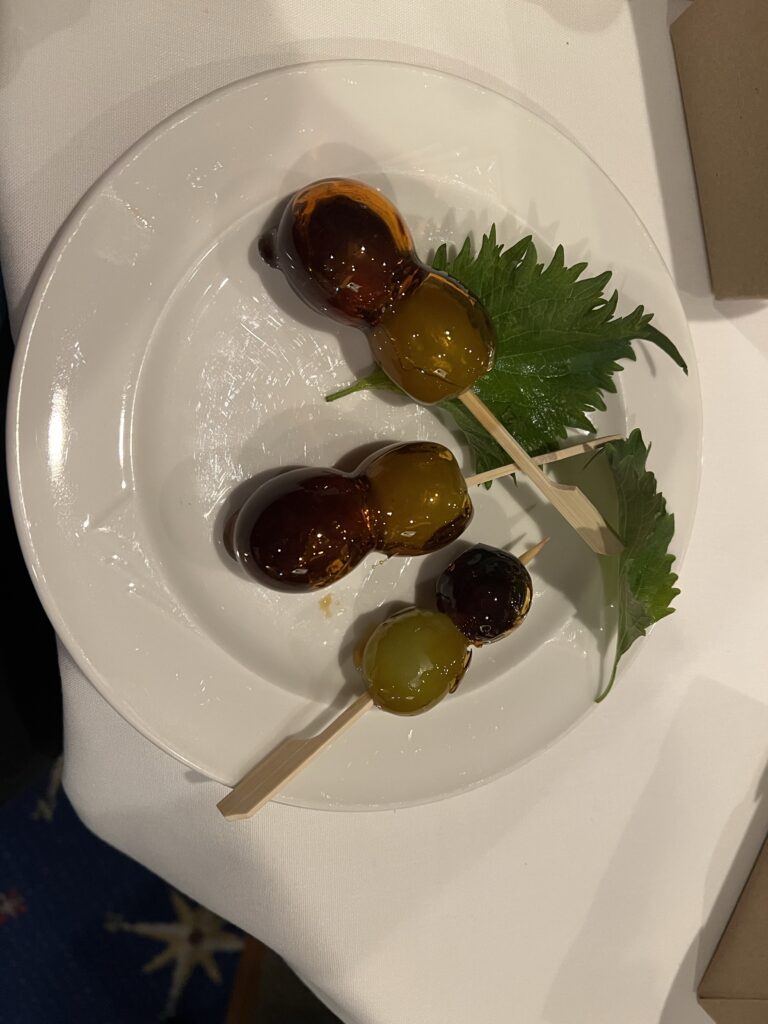
Uwajimaya hosts special events for Lunar New Year, including traditional lion dances, food tastings, and cultural performances. The company is also known for its community involvement and support of local cultural events. The company’s commitment to celebrating and promoting Asian culture is evident in its participation in events such as the Lunar New Year festivities, which are an important part of the cultural landscape of the region.
In Bellevue, some of the other Asian markets include:
- T&T Supermarket: A 76,000-square-foot flagship store, the largest Asian grocery store in Washington State, is set to open in the summer of 2024 at the Marketplace at Factoria.
- Asian Family Market: This is a neighborhood Asian supermarket offering a one-stop grocery shopping experience.
In Seattle, in addition to Uwajimaya, the following Asian market is available:
- Seattle Super Market: Located at 4801 Beacon Ave S.
These establishments offer a wide range of Asian products, including fresh produce, meats, seafood, and specialty items, catering to the diverse culinary needs of the local community.
Some traditional Lunar New Year dishes in the Salish Sea region include:
- Poon Choi: A multi-layered Cantonese dish that symbolizes harmony and prosperity. It typically contains ingredients such as sea cucumber, abalone, and black moss, each of which holds special significance in representing generosity, abundance, and wealth.
- Ginger Soy Halibut: A Malaysian dish featuring halibut prepared with a delicious combination of ginger, soy sauce, and other traditional flavors.
- Steamed Cod with Ginger and Soy Sauce: A Vietnamese dish that involves steaming cod with sesame oil, ginger, scallions, and a savory soy sauce, creating a flavorful and auspicious meal for Lunar New Year celebrations.
- Crispy Scallion Ginger Salmon: A Chinese-inspired dish that combines the traditional flavors of ginger, scallion, and soy sauce with rich, crispy salmon, offering a modern twist on a classic Lunar New Year recipe.
These dishes reflect the diverse culinary influences present in the Salish Sea region and are enjoyed as part of the vibrant Lunar New Year celebrations in the area.
Some traditional Lunar New Year dishes in Chinese cuisine include:
- Sweet Glutinous Rice Cake (Nian Gao): A sticky rice cake that symbolizes prosperity and the promise of a better year ahead.
- Whole Fish: Serving a whole fish represents abundance and prosperity for the coming year.
- Dumplings (Jiaozi): These symbolize wealth and are a popular dish during Lunar New Year.
- Sweet Rice Balls (Tangyuan): These are a sweet treat often enjoyed during the festival, symbolizing family unity and perfection.
- Soy Sauce Chicken: A classic Chinese dish that is often served whole during Lunar New Year celebrations, symbolizing good fortune and completeness.
These dishes are prepared and served to bring good luck and great prosperity for the year ahead, and they hold significant symbolic meaning in Chinese culture.
During Lunar New Year in the Salish Sea region, visitors can expect to enjoy a variety of traditional foods that hold cultural significance for the occasion. Some of these foods include:
- Vietnamese Cod Dish: Vietnamese cuisine plays a significant role in Lunar New Year celebrations, and dishes such as steamed cod are commonly enjoyed during this time. The dish may be prepared with traditional Vietnamese flavors and ingredients, symbolizing good fortune and prosperity1.
- Poon Choi: This is a traditional Chinese New Year dish that typically consists of various layers of ingredients such as shrimp, pork knuckles, marinated chicken, sea cucumber, dried oyster, and squid. Poon Choi is a festive dish that represents abundance and wealth, making it a popular choice for Lunar New Year celebrations2.
- Chinese Cold Cut Platter: Another traditional dish often enjoyed during Lunar New Year is the Chinese Cold Cut Platter, which typically includes an assortment of cured meats, sausages, and other cold cuts. This dish is symbolic of good luck and prosperity3.
- Coast Salish First Foods: In addition to Asian cuisine, the Coast Salish culture in the Salish Sea region also emphasizes the significance of traditional first foods, which include a variety of plant and animal-based ingredients that hold cultural importance and are present in many Coast Salish stories and traditions5.
These traditional foods reflect the cultural diversity of the Salish Sea region and are an integral part of the Lunar New Year celebrations, offering visitors a unique opportunity to experience the rich culinary heritage of the area.
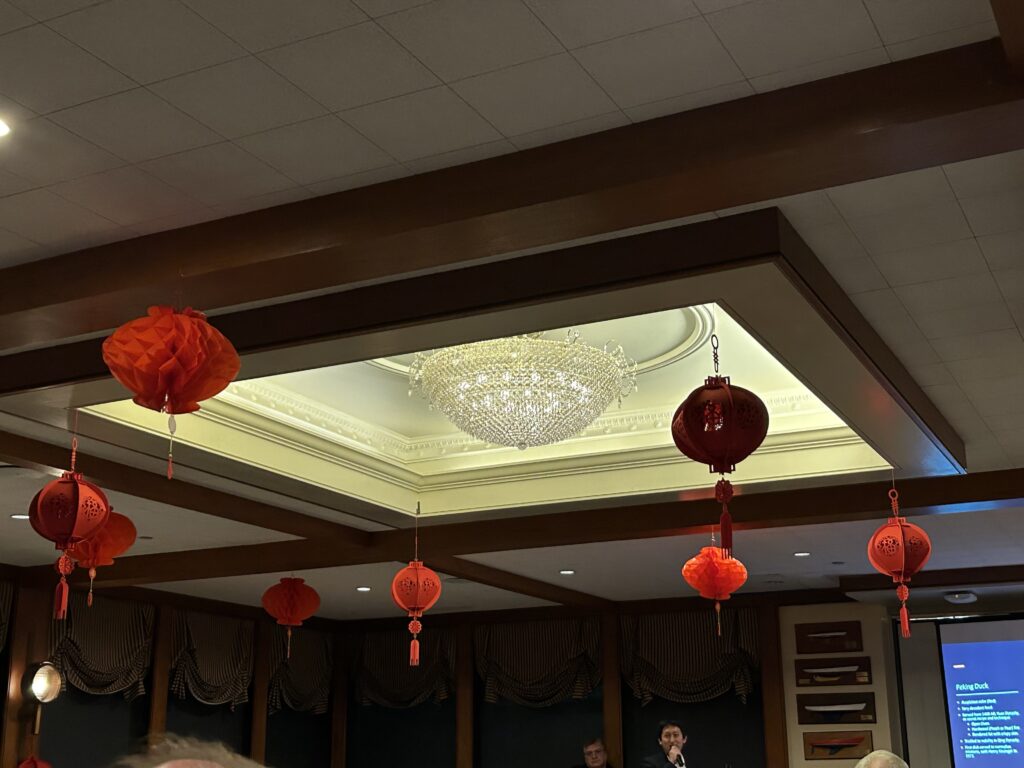
A visitor to the Salish Sea during Lunar New Year can expect to experience a vibrant celebration of art, culture, and community. The Salish Sea Lantern Festival, for example, is an annual event that features lantern displays, costumed characters, and a beautiful union of indigenous and immigrant cultures. The festival is a testament to the region’s rich cultural diversity and provides an opportunity for locals and visitors to come together and celebrate the arrival of spring and the beginning of a new year. Additionally, the Seattle area, which is part of the Salish Sea region, has a diverse population, with Asians making up nearly 15% of the city’s residents. This cultural diversity contributes to the observance of Lunar New Year through various traditions, such as family reunions, symbolic dishes, red paper cuttings, and the Lantern Festival. Therefore, a visitor to the Salish Sea during Lunar New Year can expect to witness a blend of traditional and contemporary celebrations that reflect the cultural heritage of the region’s diverse communities.
Chinese Zodiac
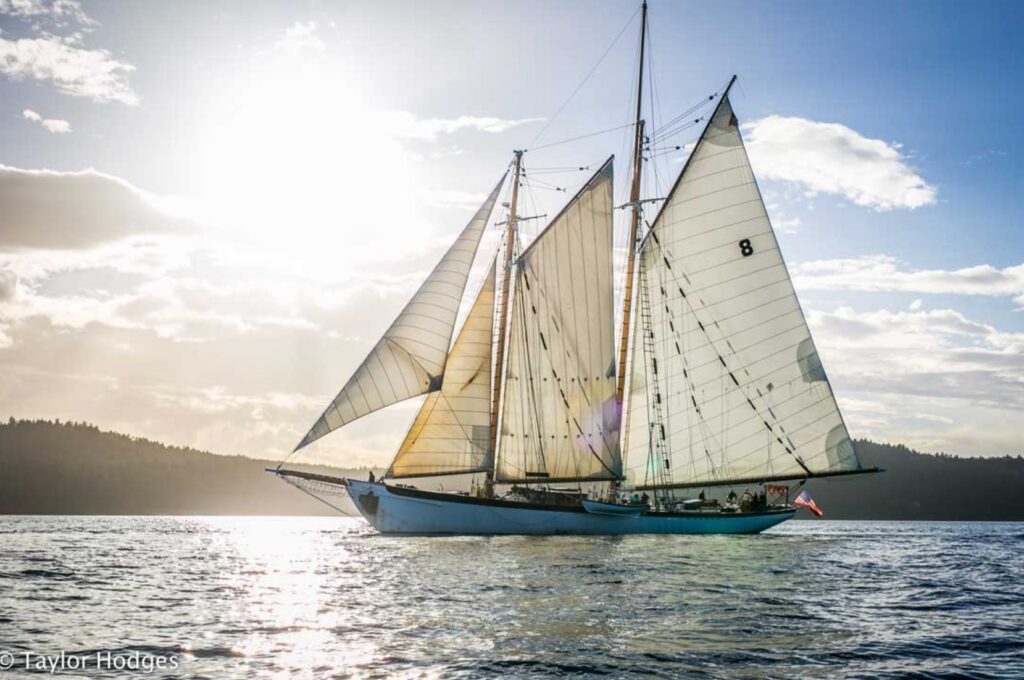
The Chinese Zodiac consists of 12 animal signs, each associated with specific personality traits. The 12 signs, their associated birth years, and some famous or super wealthy individuals for each year are as follows:
- Rat (1924, 1936, 1948, 1960, 1972, 1984, 1996, 2008, 2020): People born in the Year of the Rat are known for their intelligence, creativity, and social skills. Quick-witted, resourceful, versatile, kind. Famous individuals born in the Year of the Rat include George Washington, William Shakespeare, and Warren Buffet.
- Ox (1925, 1937, 1949, 1961, 1973, 1985, 1997, 2009, 2021): Those born in the Year of the Ox are often seen as dependable and hardworking individuals. Patient, kind, stubborn, and conservative. Notable individuals born in the Year of the Ox include Barack Obama, Vincent Van Gogh, and Adolf Hitler.
- Tiger (1926, 1938, 1950, 1962, 1974, 1986, 1998, 2010): Tigers are known for their bravery and charisma. Brave, heroic, competitive, and trustworthy. Famous individuals born in the Year of the Tiger include Marilyn Monroe, Beethoven, and Marco Polo.
- Rabbit (1927, 1939, 1951, 1963, 1975, 1987, 1999, 2011): Those born in the Year of the Rabbit are often gentle and compassionate. Gentle, quiet, elegant, and alert. Notable individuals born in the Year of the Rabbit include Albert Einstein, Whitney Houston, and Brad Pitt.
- Dragon (1928, 1940, 1952, 1964, 1976, 1988, 2000, 2012): Dragons are known for their leadership and adventurous spirit. Confident, intelligent, enthusiastic, and passionate. Famous individuals born in the Year of the Dragon include Bruce Lee, Salvador Dali, and John Lennon.
- Snake (1929, 1941, 1953, 1965, 1977, 1989, 2001, 2013): Those born in the Year of the Snake are often associated with decision-making and wisdom. Enigmatic, intelligent, wise, and charming. Notable individuals born in the Year of the Snake include Abraham Lincoln, Pablo Picasso, and Oprah Winfrey.
- Horse (1930, 1942, 1954, 1966, 1978, 1990, 2002, 2014): Horses are known for their energetic and adventurous nature. Horse are often characterized as energetic, hardworking, and independent. They are known for their friendly nature, as well as their diligence and determination. Animated, active, energetic, and cheerful. Famous individuals born in the Year of the Horse include Rembrandt, Aretha Franklin, Joe Biden and Neil Armstrong.
- Goat (1931, 1943, 1955, 1967, 1979, 1991, 2003, 2015): Those born in the Year of the Goat are often seen as mild-mannered and kind. Calm, gentle, sympathetic, and Notable individuals born in the Year of the Goat include Michelangelo, Mark Twain, and Bill Gates.
- Monkey (1932, 1944, 1956, 1968, 1980, 1992, 2004, 2016): Monkeys are known for their fun and energetic personalities. Witty, intelligent, confident, and charismatic. Famous individuals born in the Year of the Monkey include Leonardo da Vinci, Charles Dickens, and Harry S. Truman.
- Rooster (1933, 1945, 1957, 1969, 1981, 1993, 2005, 2017): Those born in the Year of the Rooster are often independent and hard-working. Independent, practical, hard-working, and observant. Notable individuals born in the Year of the Rooster include Prince Philip, Elton John, and Beyoncé.
- Dog (1934, 1946, 1958, 1970, 1982, 1994, 2006): Dogs are known for their loyalty and kindness. People born in the Year of the Dog are often associated with loyalty, honesty, and a strong sense of responsibility. They are also known for being straightforward, friendly, and having a strong moral character45. Loyal, honest, responsible, and courageous. Famous individuals born in the Year of the Dog include Mother Teresa, Winston Churchill, Donald Trump and Michael Jackson.
- Pig (1935, 1947, 1959, 1971, 1983, 1995, 2007): Those born in the Year of the Pig are often loving and tolerant. Diligent, compassionate, generous, and gentle. Notable individuals born in the Year of the Pig include Ernest Hemingway, Alfred Hitchcock, and Ronald Reagan.
The Chinese zodiac signs are associated with five elements: Wood, Fire, Earth, Metal, and Water. Each element is linked to specific years and zodiac signs, creating a 60-year cycle. It’s important to note that while these associations are part of Chinese tradition and culture, they are not scientifically proven. The Chinese Zodiac is a cultural belief system and should be regarded as such.
The tall ship Zodiac, a gaff-rigged topsail schooner, was built in 1924 at the Hodgdon Brothers Shipyard in Maine. It was designed by William H. Hand, Jr. for Robert Wood Johnson and J. Seward Johnson, heirs to the Johnson & Johnson pharmaceuticals fortune. The ship’s mainmast towers over twelve stories high, and it proudly boasts the largest working mainsail on the west coast. The vessel was used for various purposes, including sailing as far north as Nachvak, Labrador, and participating in races. She is currently sailing with up to 49 passengers through the waters of Puget Sound, the San Juan Islands, and on international trips1345.
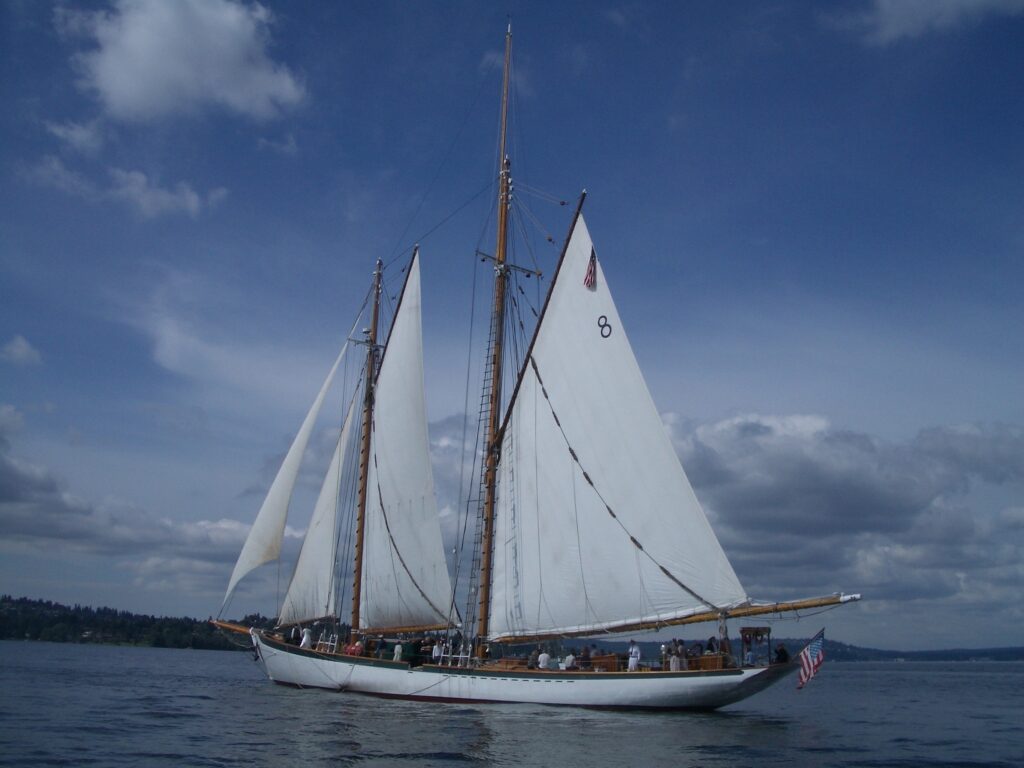



https://asamnews.com/wp-content/uploads/2024/03/Lunar-New-Year-Seattle.jpg
Washington becomes third state to recognize Lunar New Year